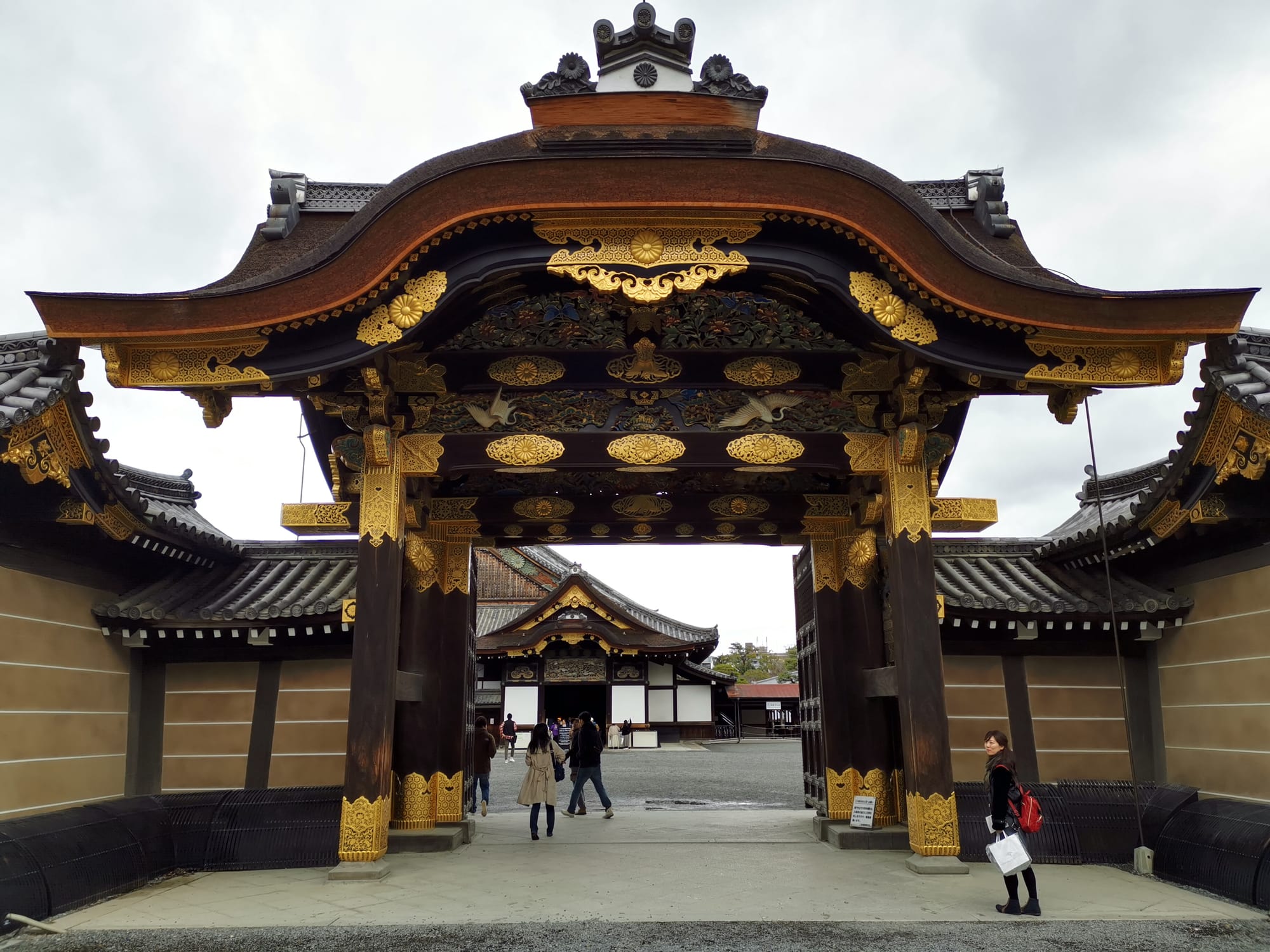Kyoto, Japan
It is unbelievable just how many interesting things there are to see and do in Kyoto: temples, shrines, castles, palaces, gardens, parks, the list goes on! It's not hard to see why Kyoto is one of the most popular tourist destinations in all of Japan.
Day 1
We arrived in Kyoto at around 8pm after taking the Shinkansen Hikari bullet train from Hakone. Although the journey was a cool experience, I wished we had gone during the day so that I could have watched the countryside whizz by.
On the way to our aparment, we passed the entrance to Fushimi Inari Taisha, one of the most famous Shinto shrines in all of Japan. We stopped to have a quick look from the roadside before continuing onward to our accomodation.
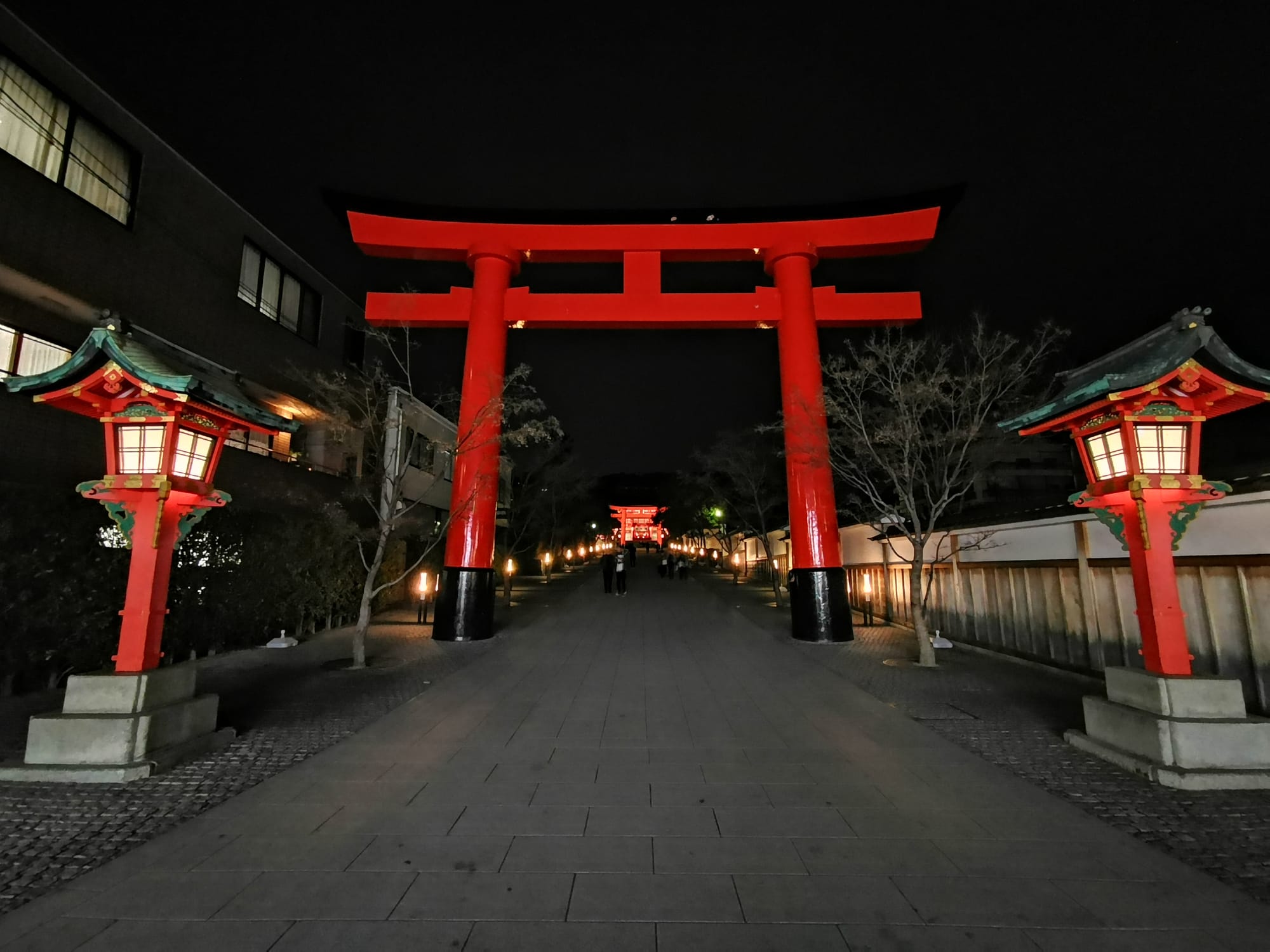
The place we were staying in was called Kamon Inn, a cosy ryokan style apartment in the south of the city.

Day 2
It was raining when we woke up the next morning — not quite what we wanted on our first full day in Kyoto.
In an effort to avoid some of the bad weather, we decided that Nishiki Market would be the first destination of the day.
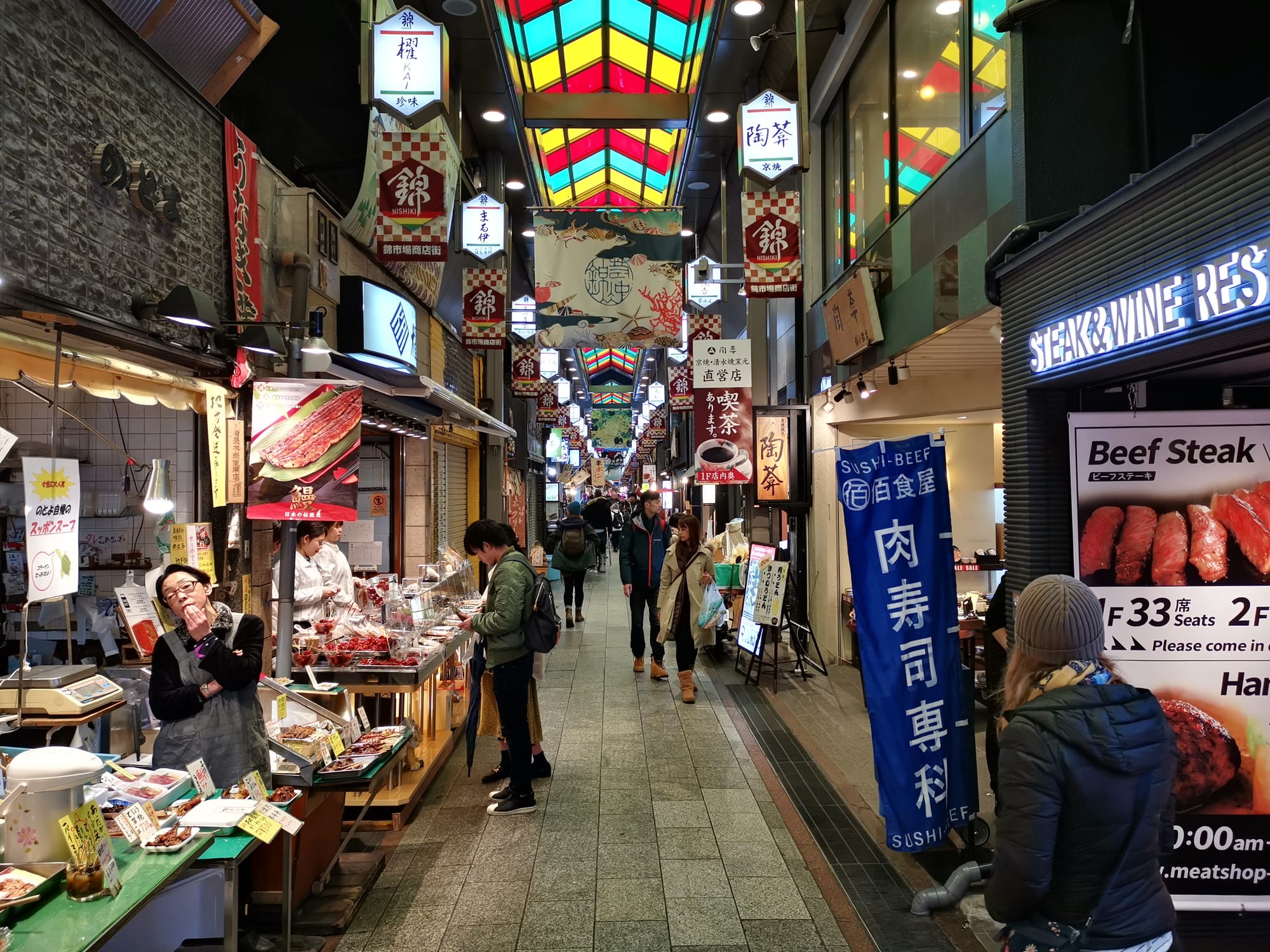
We enjoyed exploring the colorful shopping streets, looking at the variety of goods for sale and having some delicious sushi for lunch.
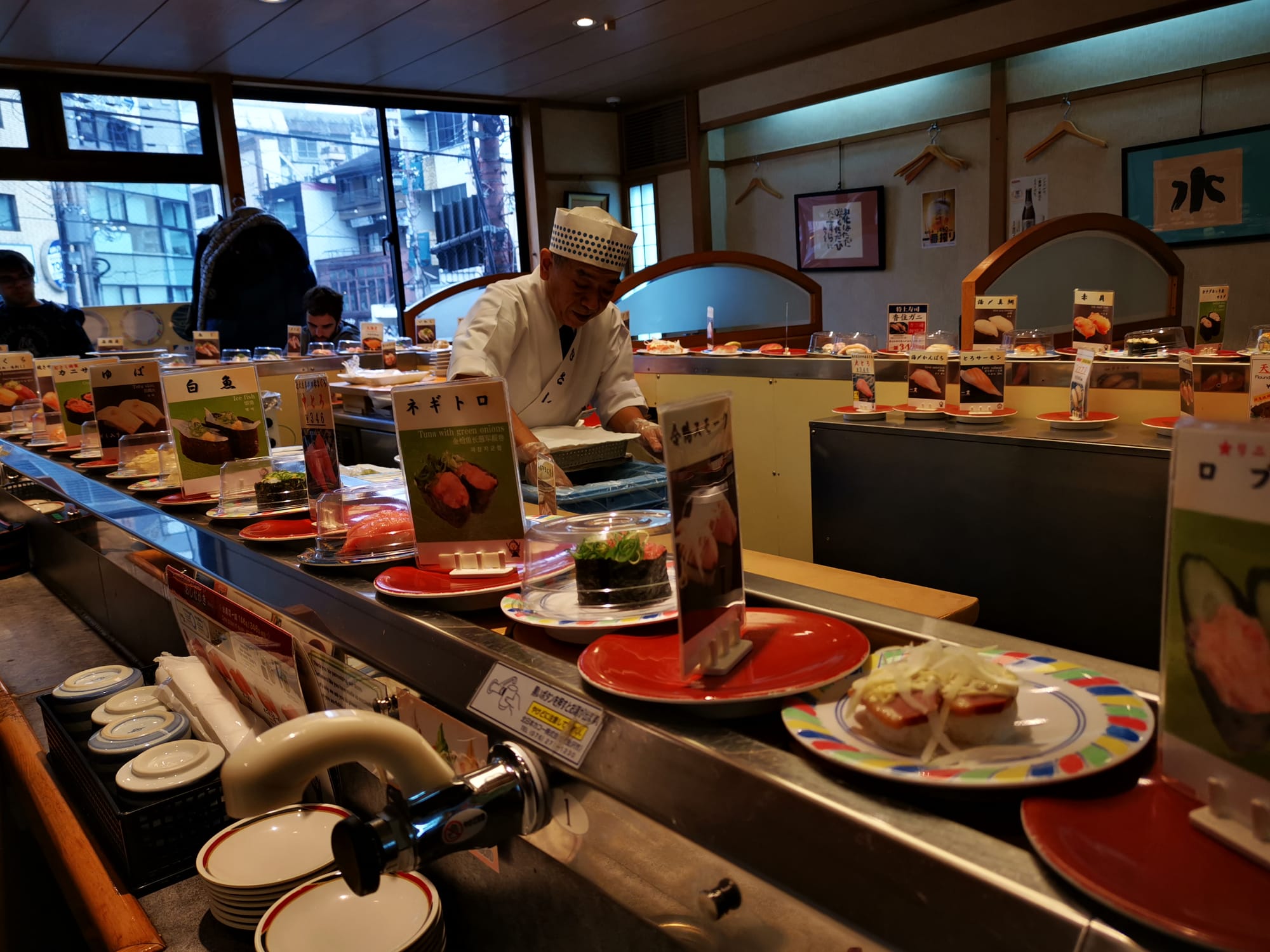
Afterwards, we headed west to Gion, the old entertainment district. The streets around this area are lined with traditional Japanese-style buildings which have been converted into bars, restaurants and small boutique shops. It was fairly busy with tourists strolling up and down the street taking photos. Gion is also known as the geisha district but, unfortunately, none happened to be mooching about the day we visited.
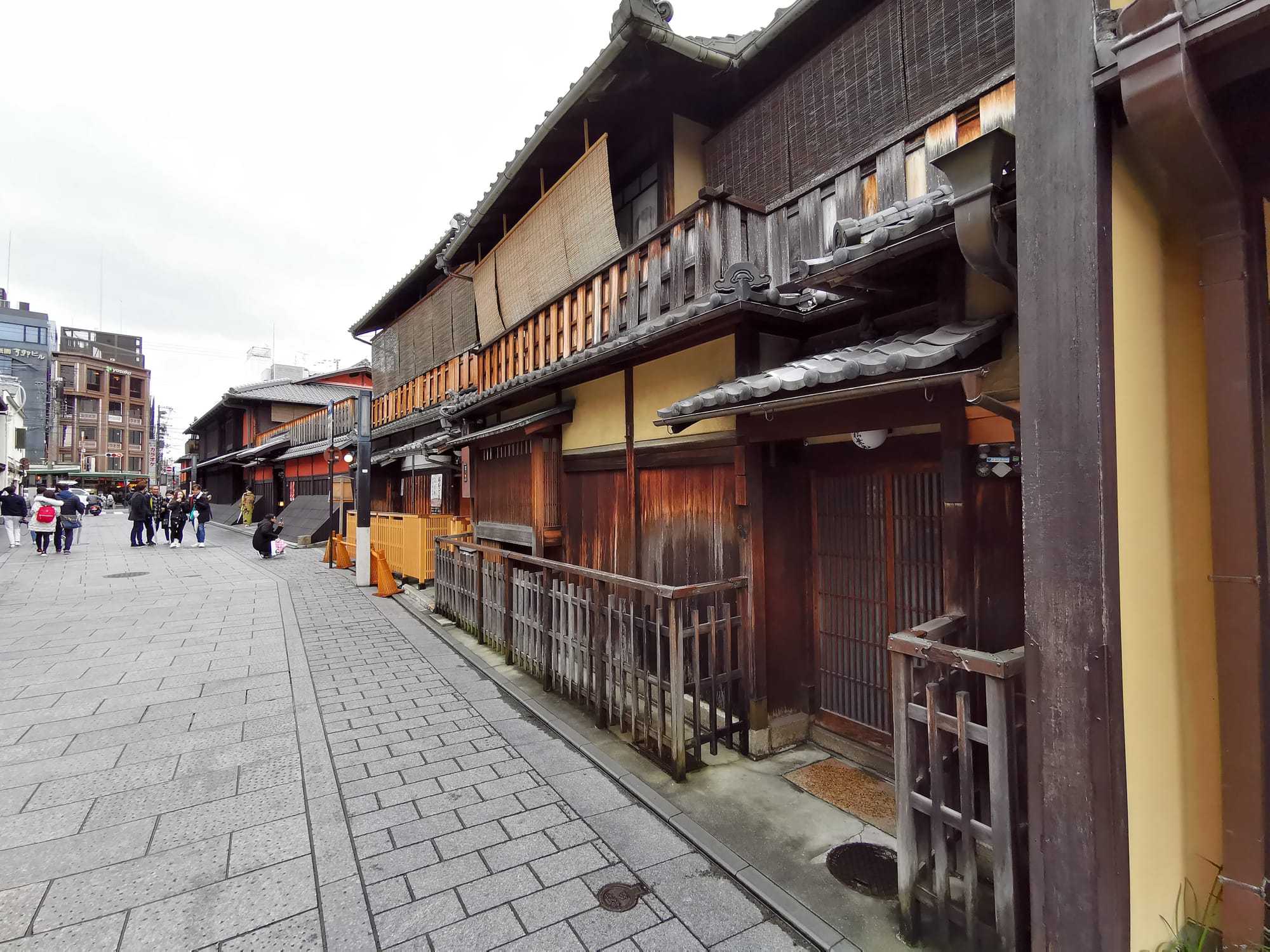
At the end of Hanami Lane is Kennin-ji, one of the great Zen Buddhist temples of Kyoto. Inside the grounds, we were able to explore the numerous halls and accompanying Zen gardens.
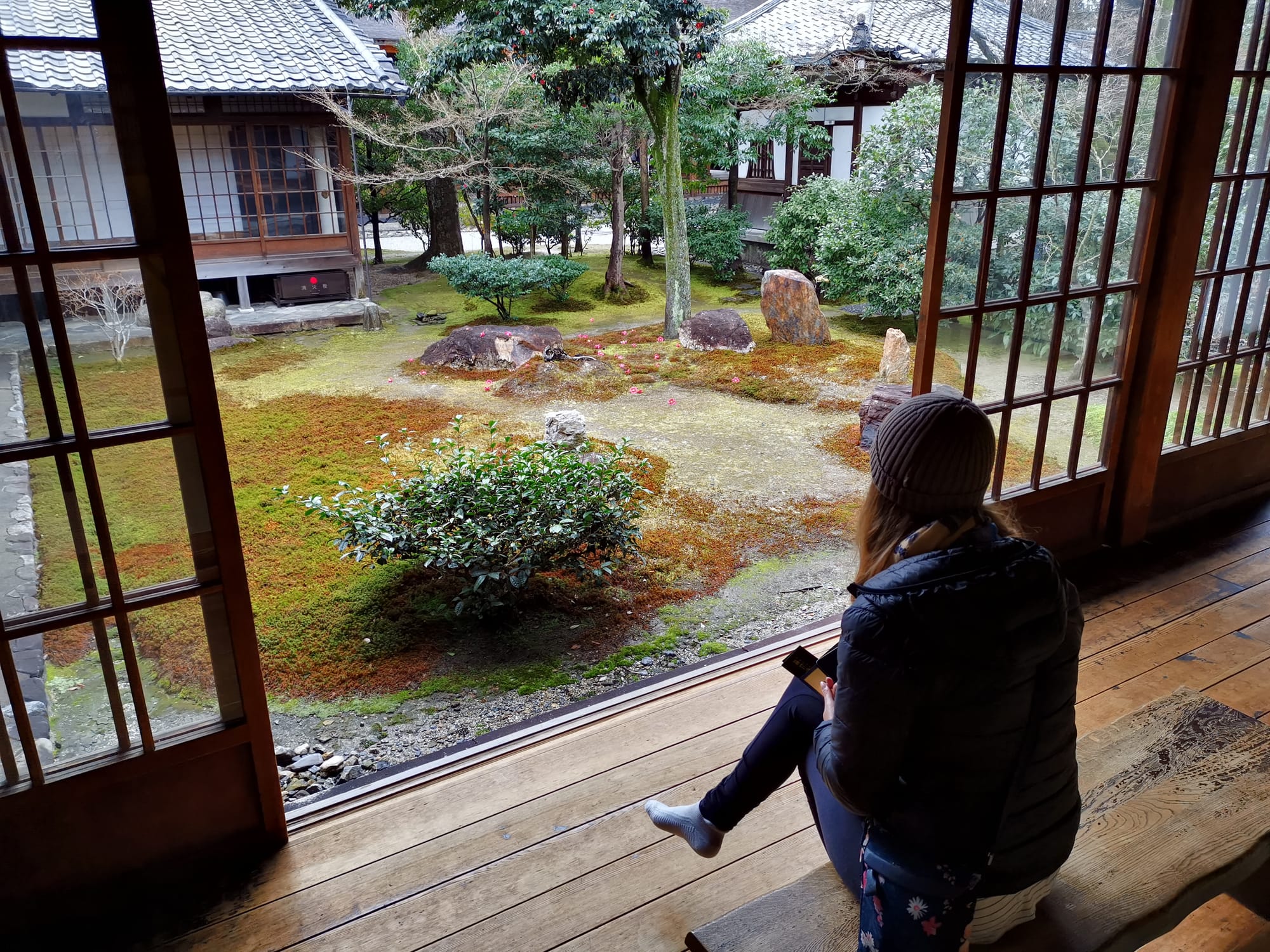
Notable pieces of artwork were on display throughout the temple, the most famous coming at end: the mural of the twin dragons on the ceiling of the Dharma Hall. This was a cool experience and definitely worth the cost of admission.
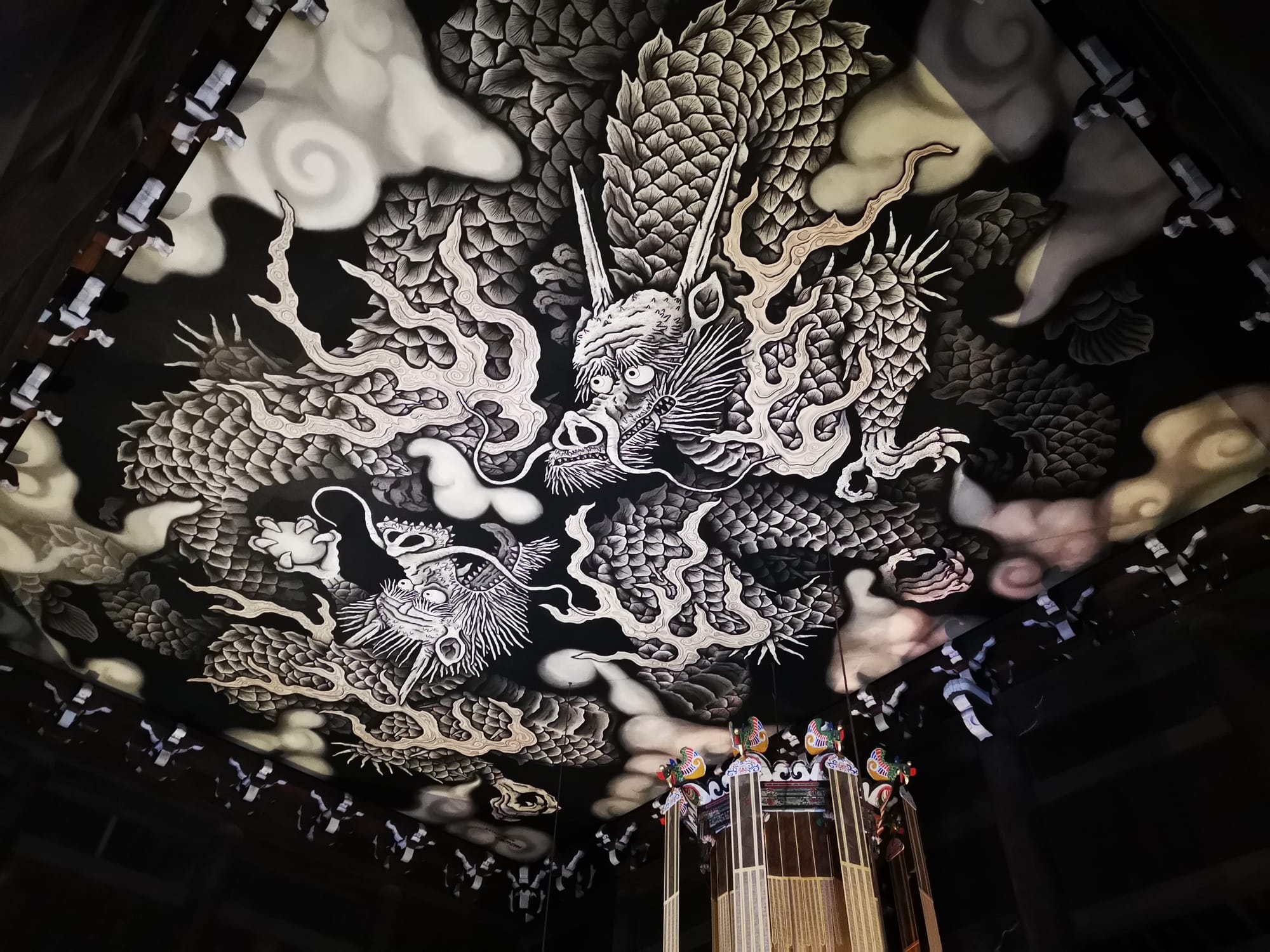
By the afternoon, the weather had cleared up nicely so we were happy to venture a bit further out. Our next stops were the Yasaka Shrine and Maruyama Park in the Higashiyama District. We thought that these places were beautiful and could only imagine how amazing they must be during the autumn or spring time.
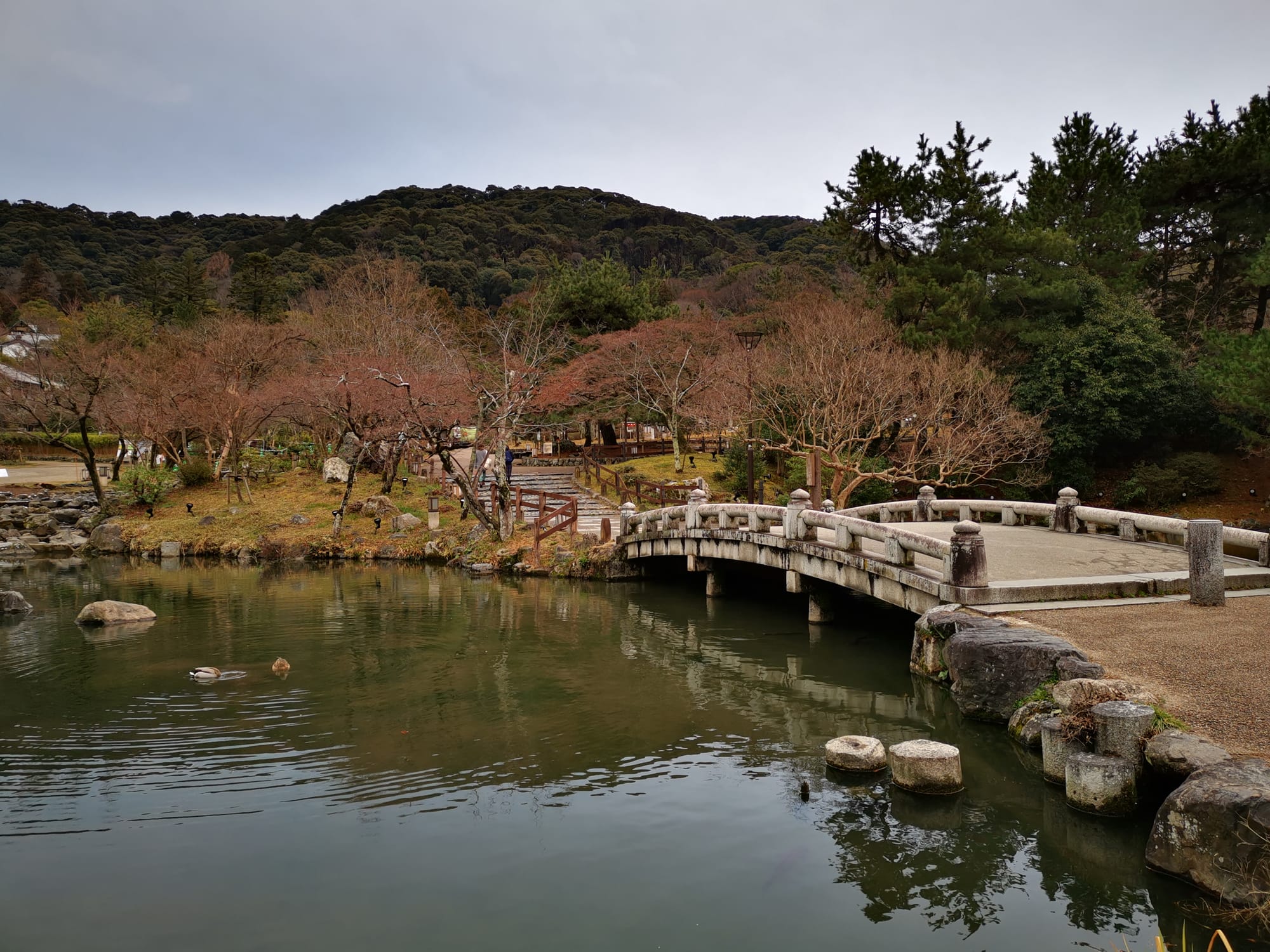
The Higashiyama District is the place to go to get the most authentic feeling of what Kyoto would have been like during its days as the capital city. The charming lanes of traditional wood panelled shops have been exquisitively preserved. This district is also home to numerous ancient temples, shrines and pagodas.
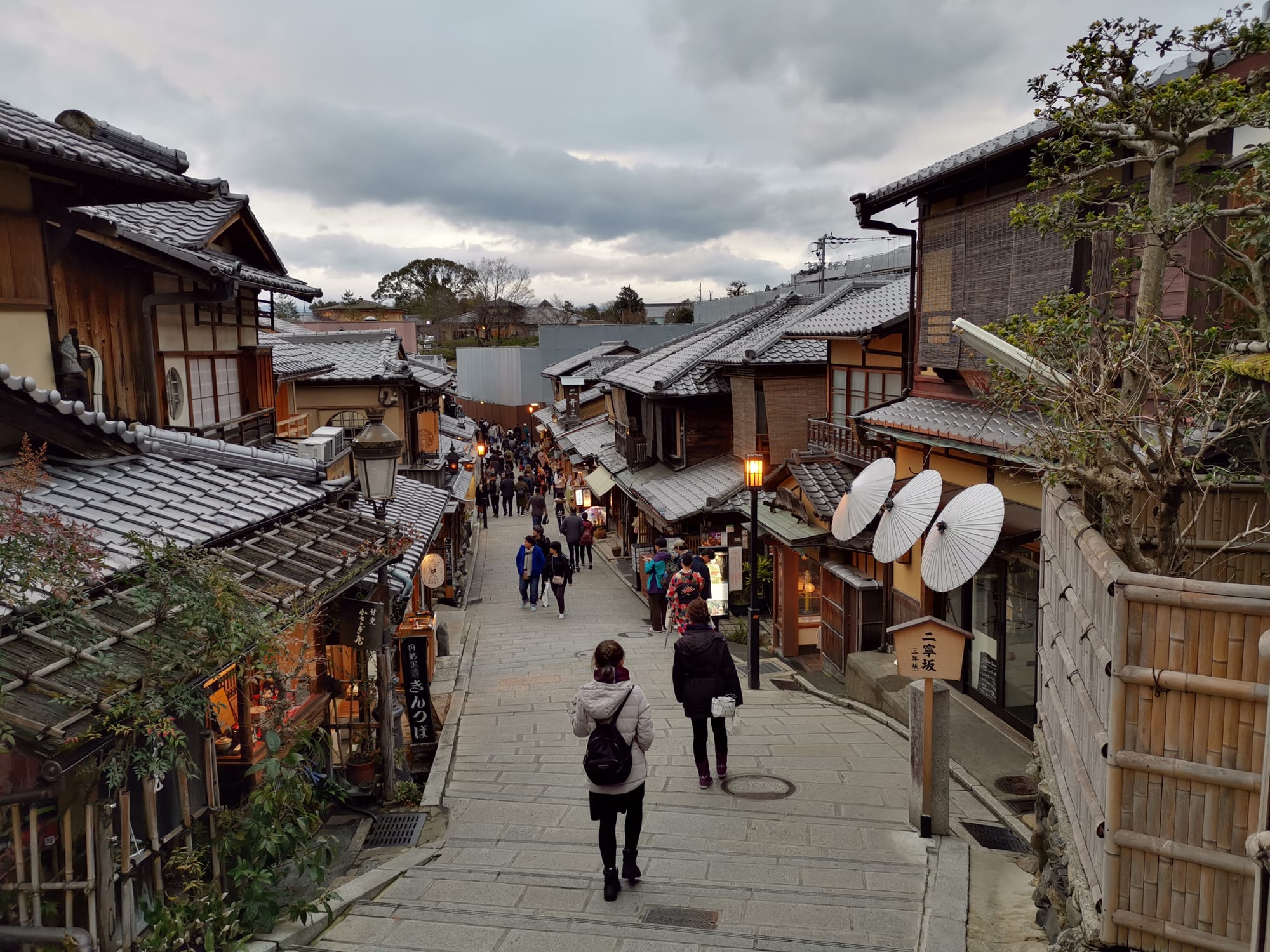
Possibly the most famous street in Higashiyama is Nineizaka. This delightful, sloping lane overlooks the Hōkanji temple pagoda and leads up to Kiyomizu-dera, one of Kyoto's most historically significant temples.
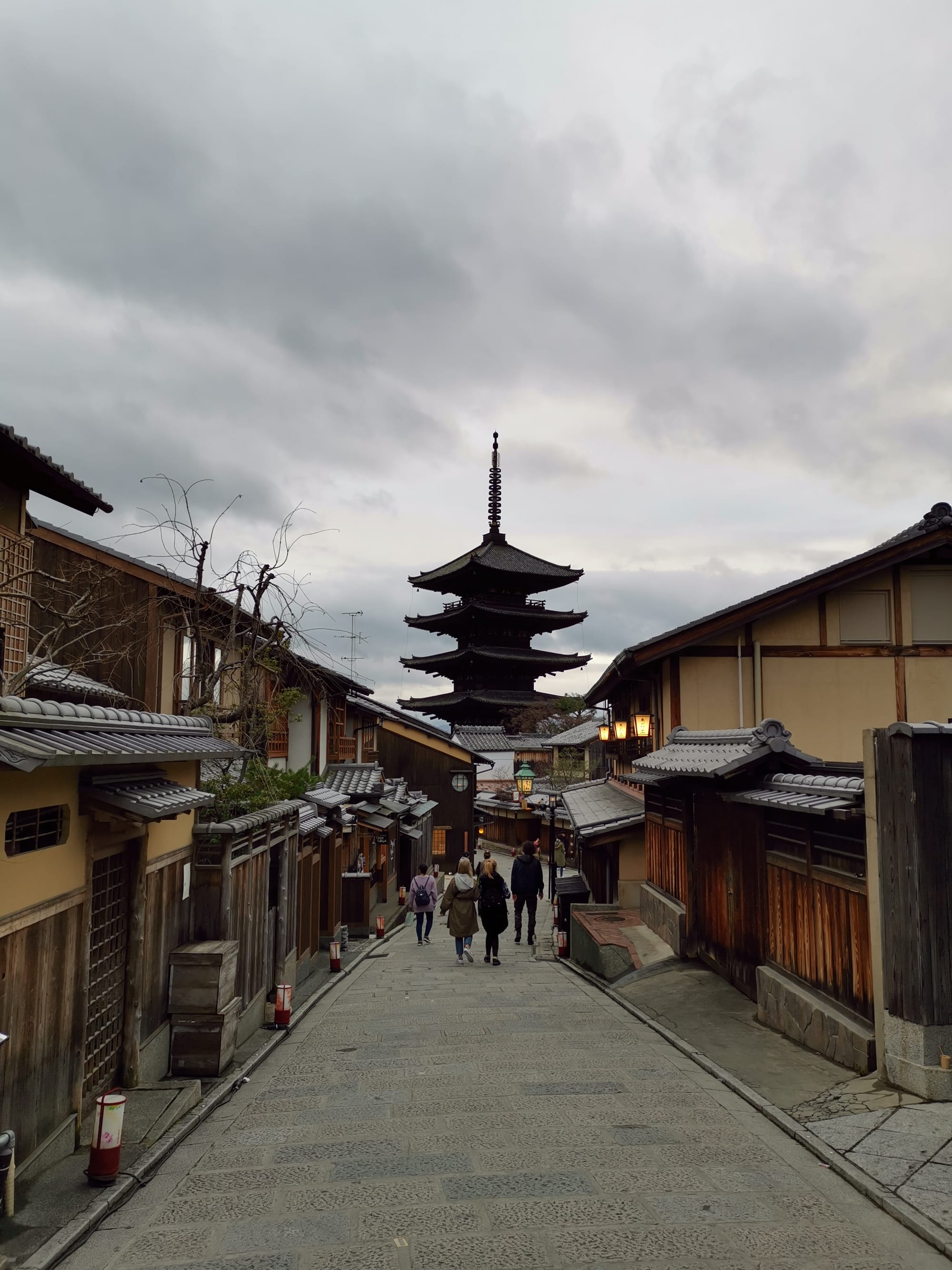
It was getting close to closing time so we didn't have long to look around Kiyomizu-dera. One of the main attractions of the temple is its 13m high wooden veranda which grants visitors a stunning view of the surrounding hillside with Kyoto in the background. Sadly, this section of the main hall was under renovation at the time and so we weren't able to access it. Luckily, other areas of the temple grounds offered some pretty cool views too so we didn't mind.
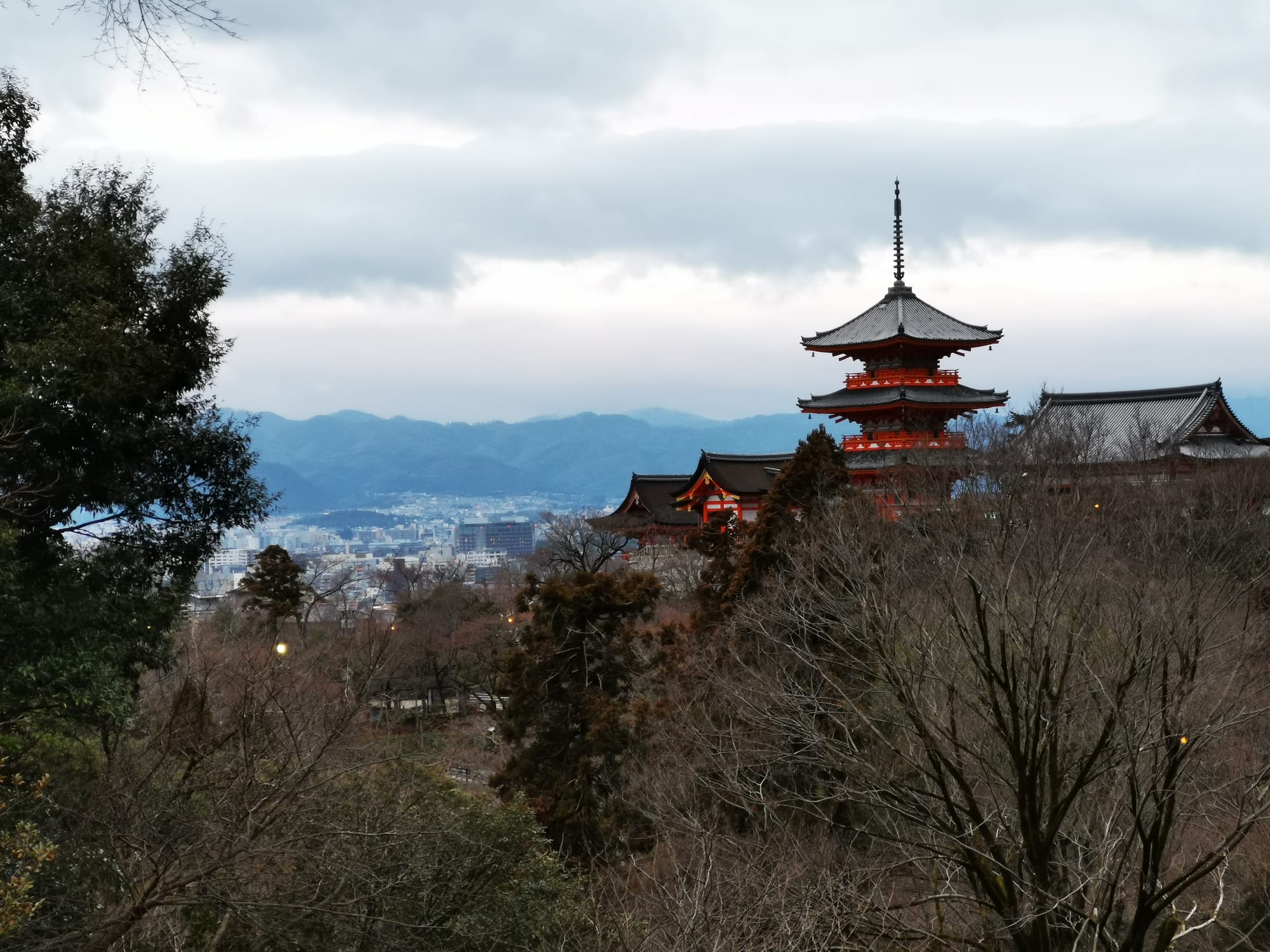
Before leaving Kiyomizu-dera, we passed the Otowa Waterfall. The three streams of this fall are believed to bestow upon the drinker different benefits: one is longevity, one is success in love and the other is knowledge. You are not meant to drink from more that one as it is considered greedy. Siwan and I both drank from the middle one but have absolutely no idea which benefit we are supposed to receive... guess we'll have to wait and see! The water that flows here is actually where Kiyomizu-dera gets its name (Pure Water Temple).
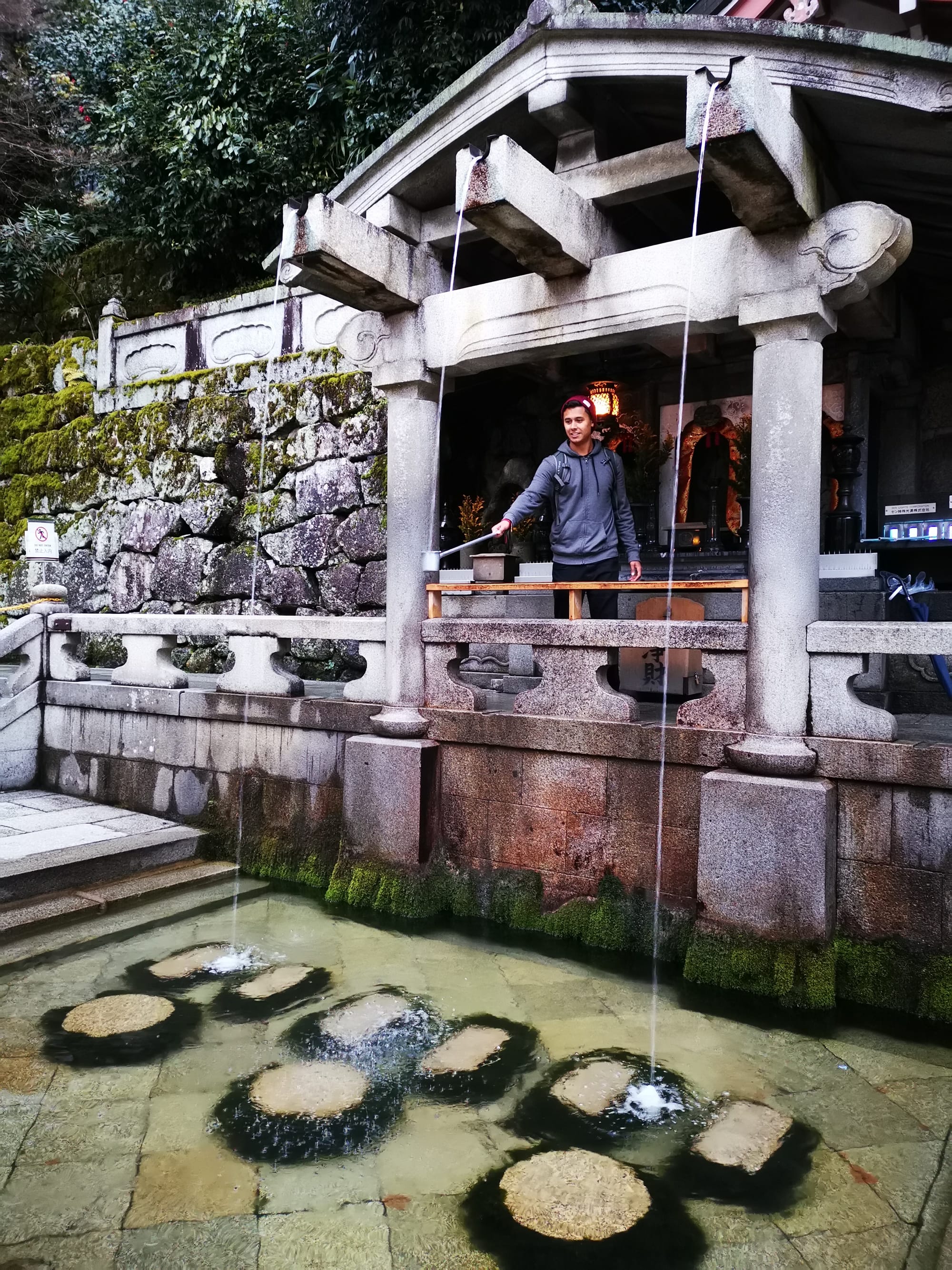
When closing time came, we wandered back down Nineizaka and off into the night to get some dinner.
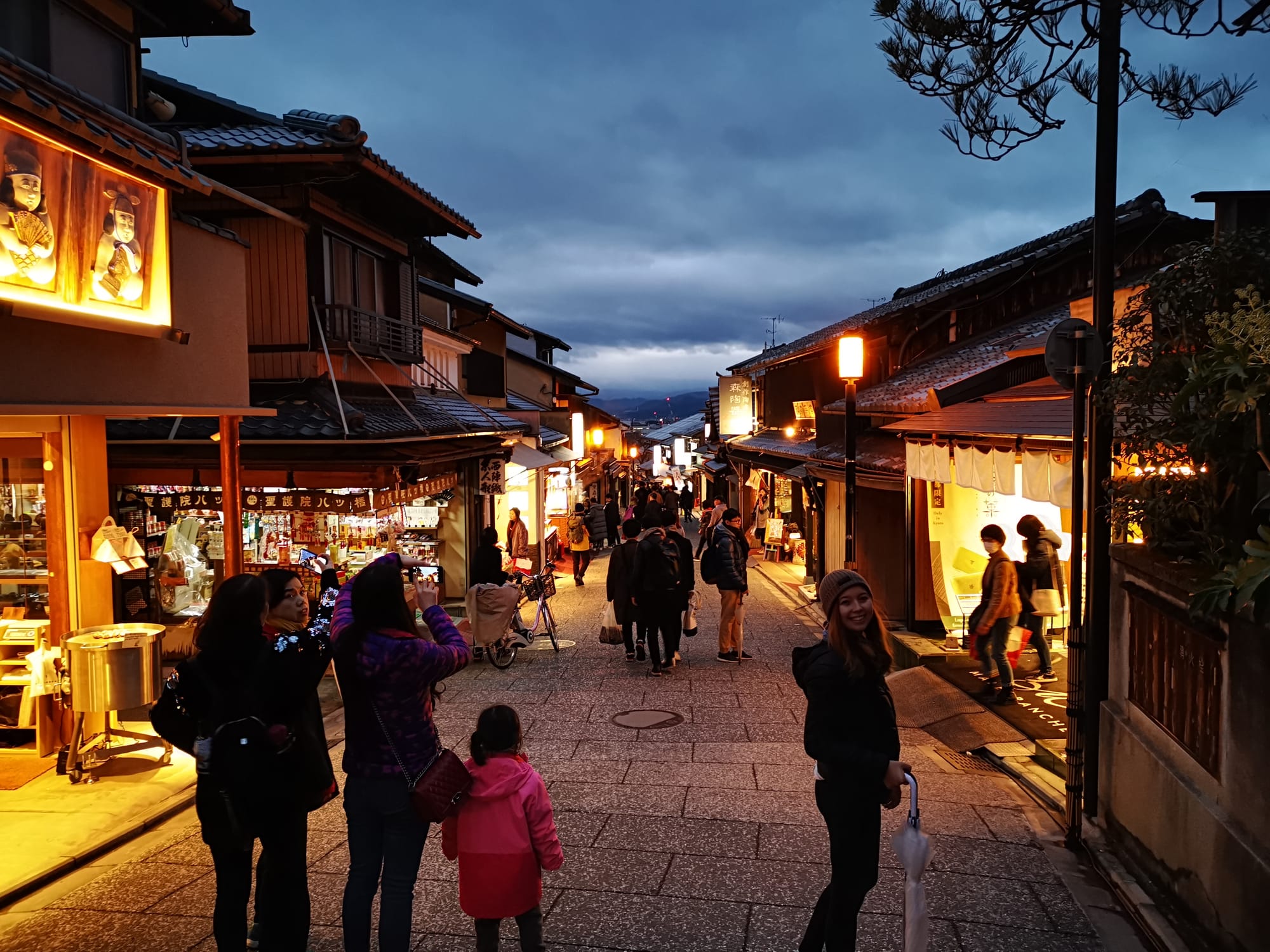
Day 3: Takashi Day
On our third day, we had arranged to meet up with Takashi, the really nice Japanese guy we met at our hostel in Tokyo. Having been born and raised in Kyoto meant he knew the city like the back of his hand and so he very kindly offered to take us around for some sightseeing.
Before meeting up with Takashi, we spent the morning having a look around the Kyoto Imperial Palace. It was free to enter the grounds but visitors were not permitted to enter any of the buildings. We didn't mind; however, as it was enjoyable enough just walking around the palace gardens.
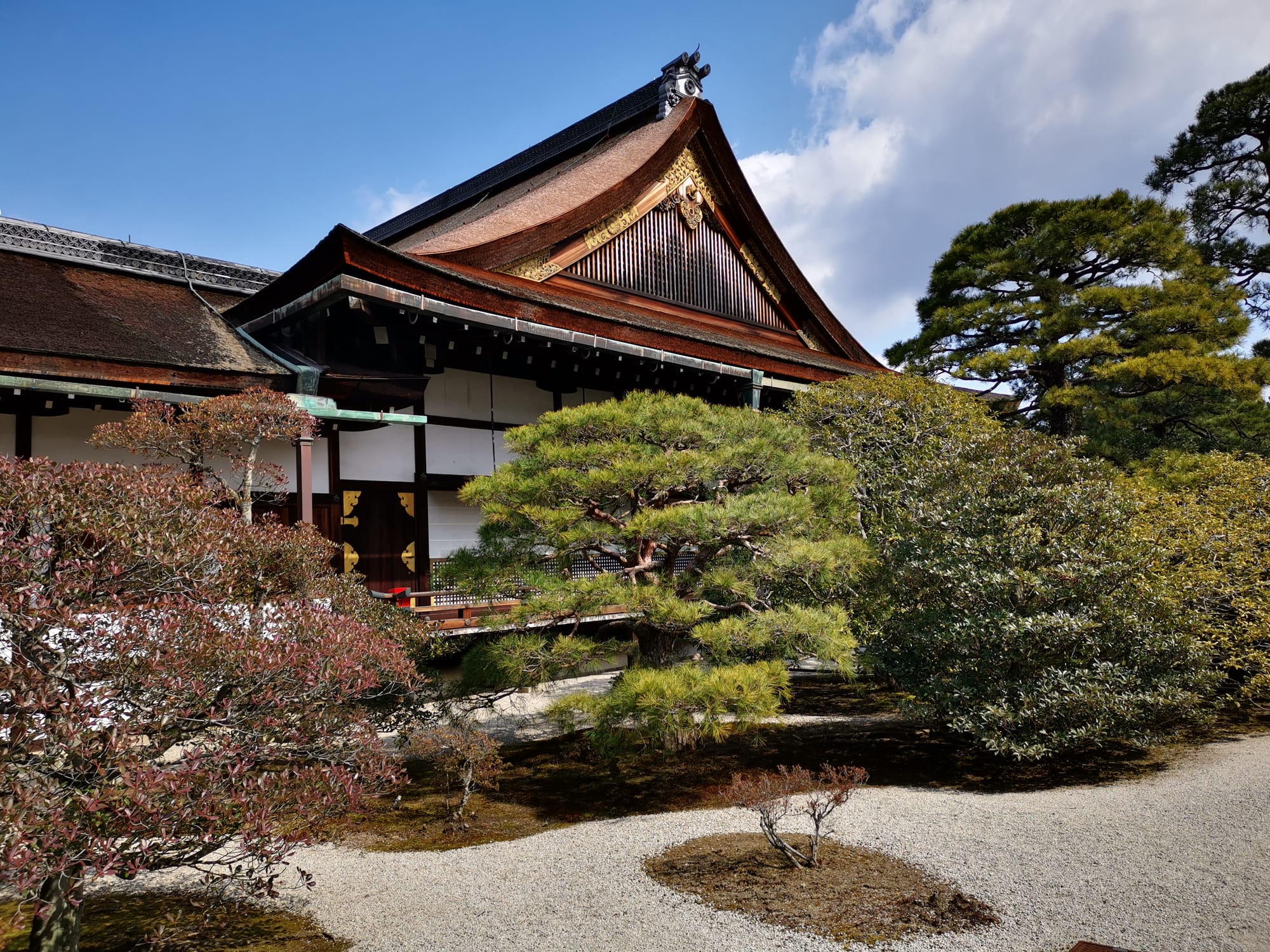
Afterwards, we made our way over to a small traditional looking restaurant called Toriiwarou. The restaurant opens for two hours at lunchtime and only serves one dish: a bowl of delicious chickeny goodness called oyakodon. It was at this restaurant that we met up with Takashi.
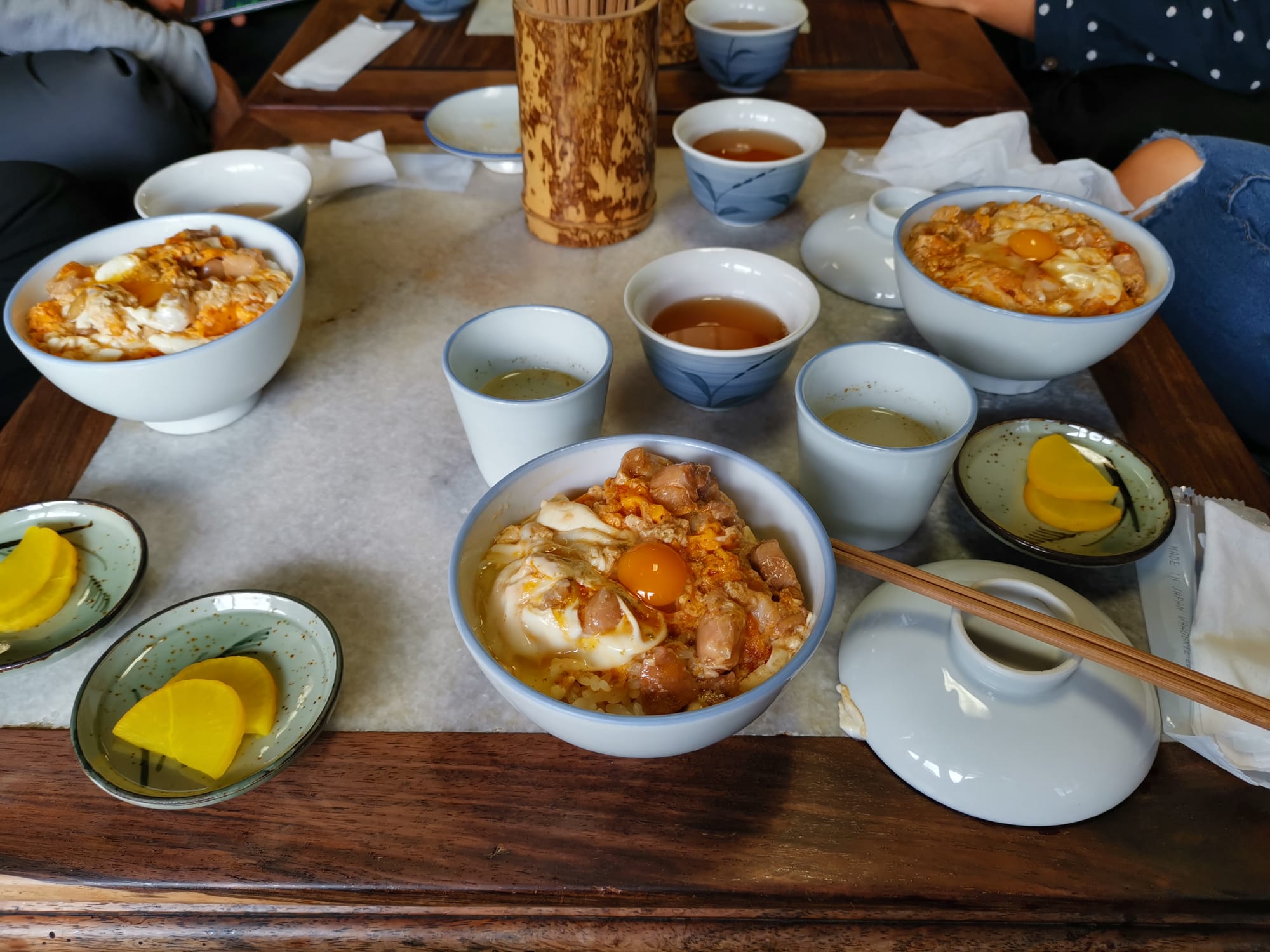
After lunch, Takashi took us to a couple of temples in the surrounding area. Kuginuki is a temple where people go to pray for the health of loved ones and Enmadou is a temple of judgement.
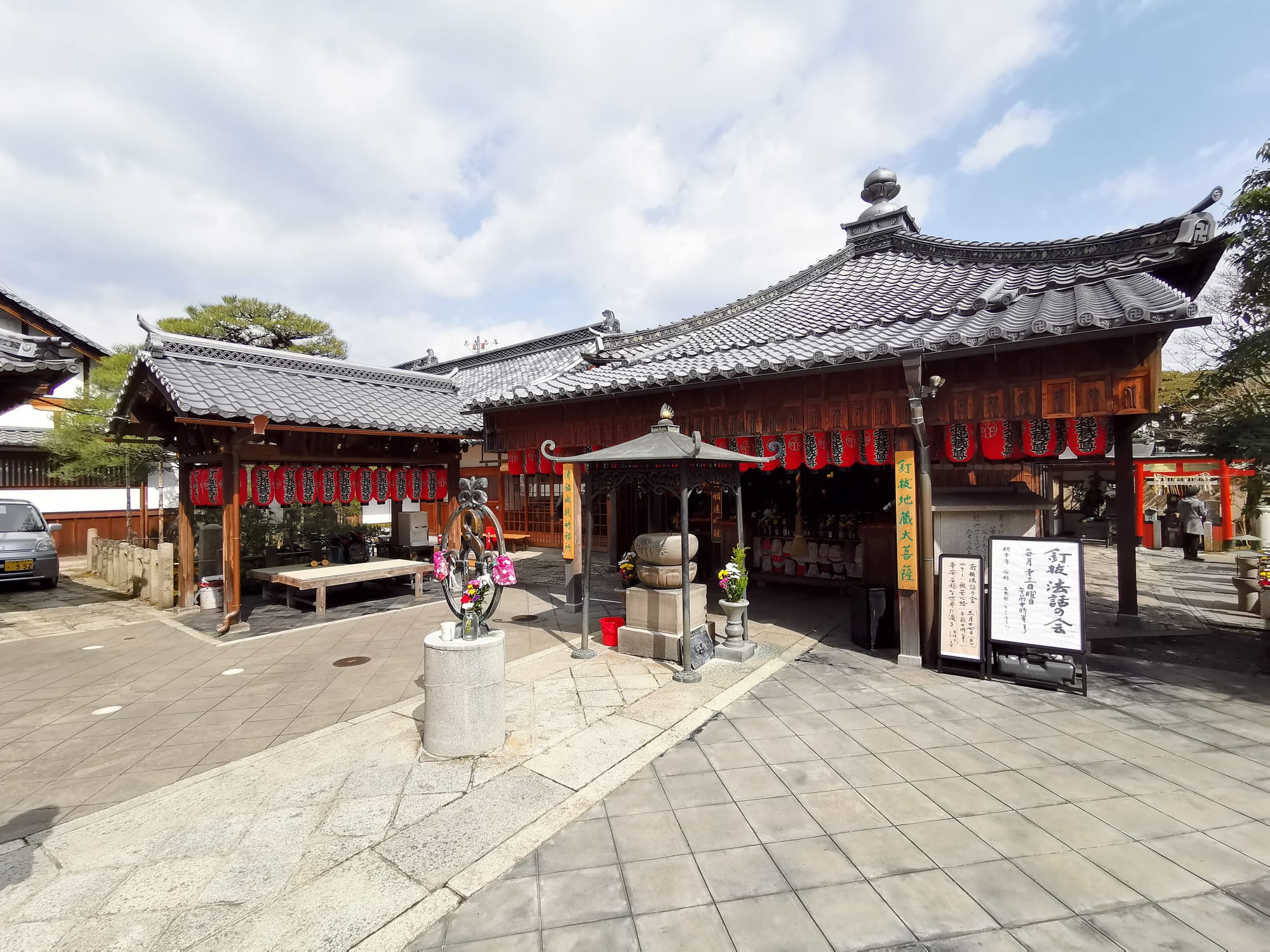
Kitano Tenmangu Shrine was next on Takashi's itinerary. This Shinto shrine is known across Japan for its association with Tenjin, the Shinto god of education. Takashi was telling us that during exam periods students from all over the country flock here to pray for academic success.
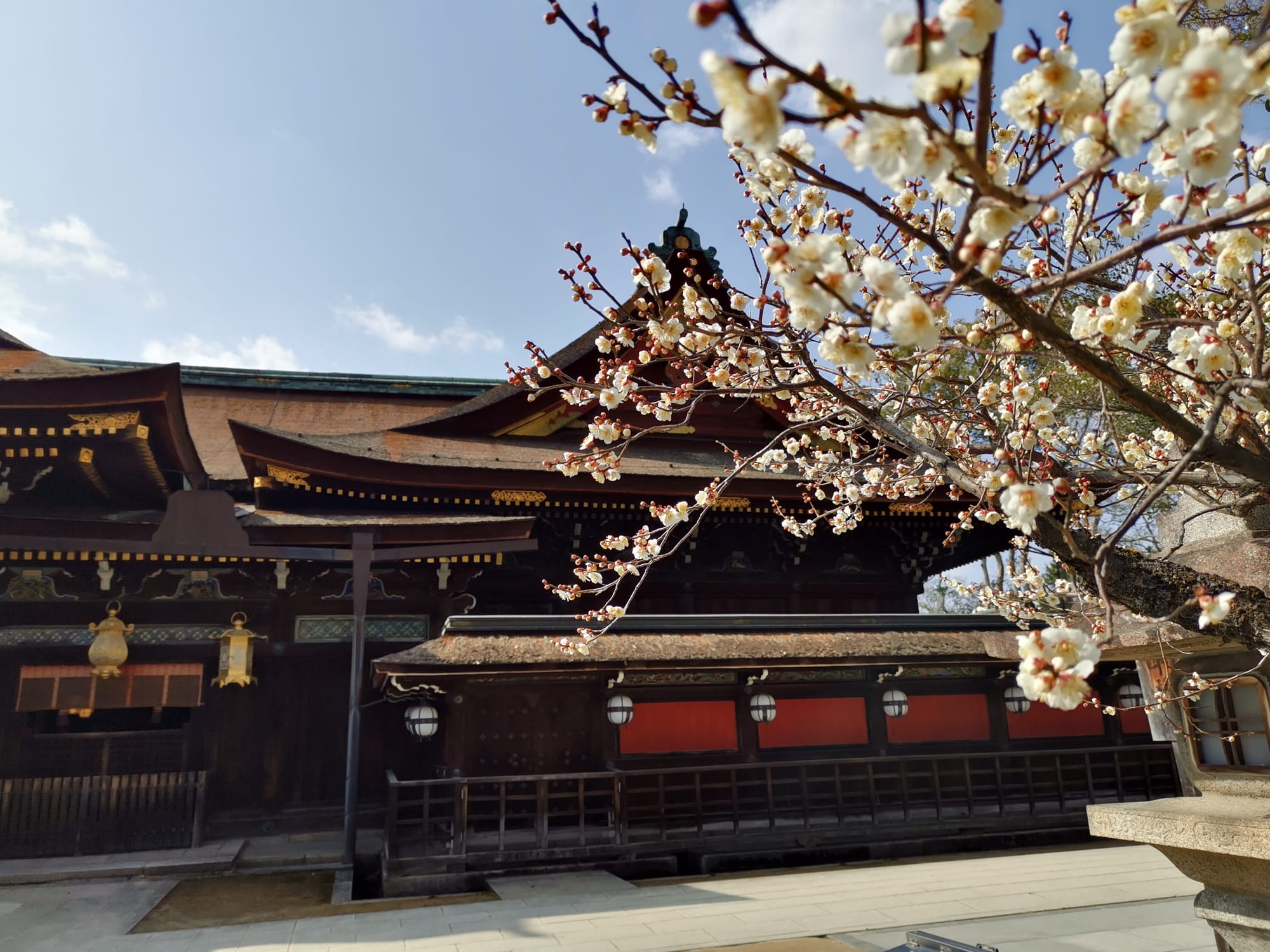
A large plum grove is situated within the grounds. Luckily for us, most of the trees were in bloom. Siwan loved it!
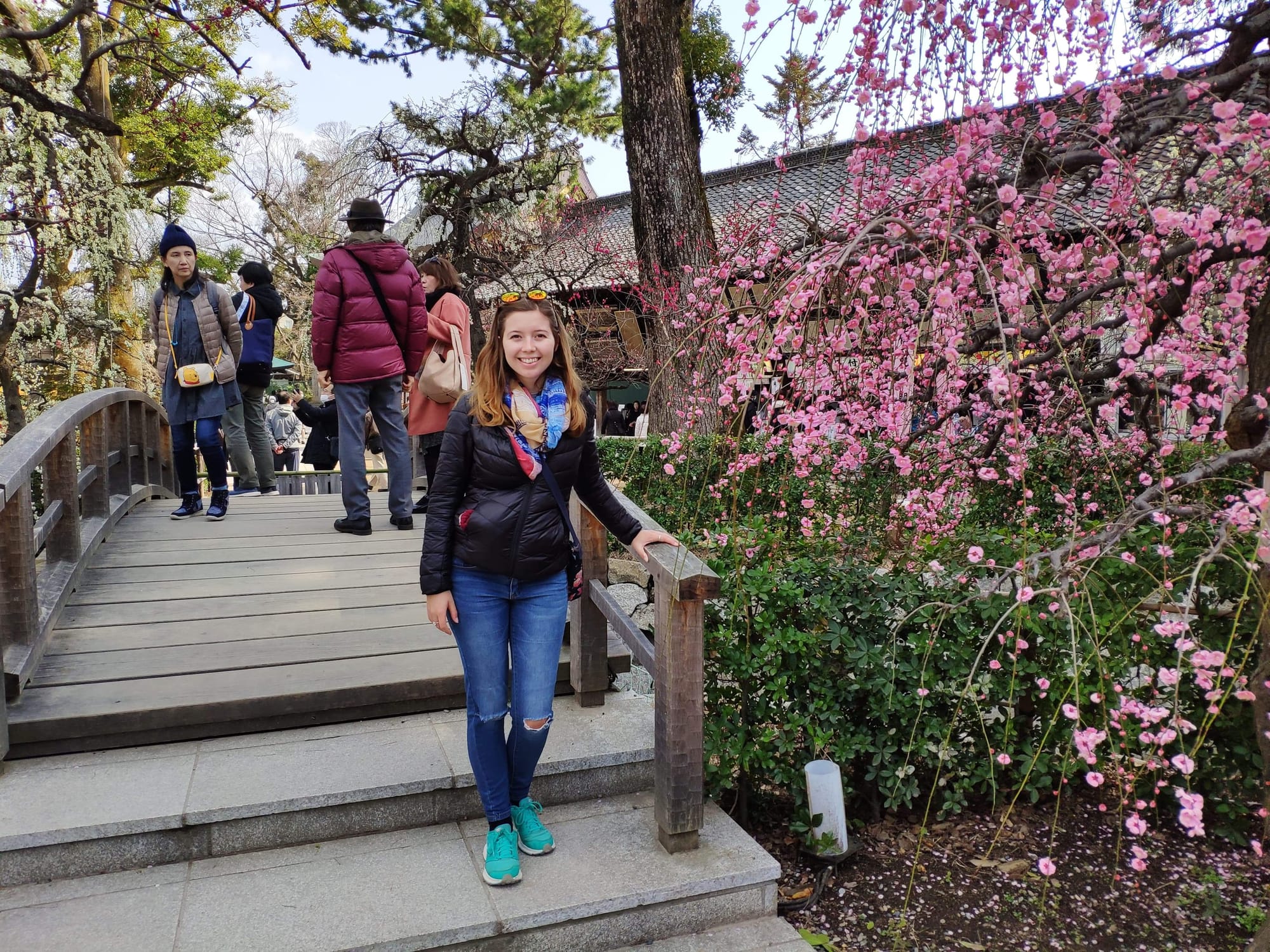
Next stop was Genko-an Temple, one of Takashi's favourite places in Kyoto. It is a Zen Buddhist temple and garden. It was so peaceful here; it seemed like the perfect place for meditation.
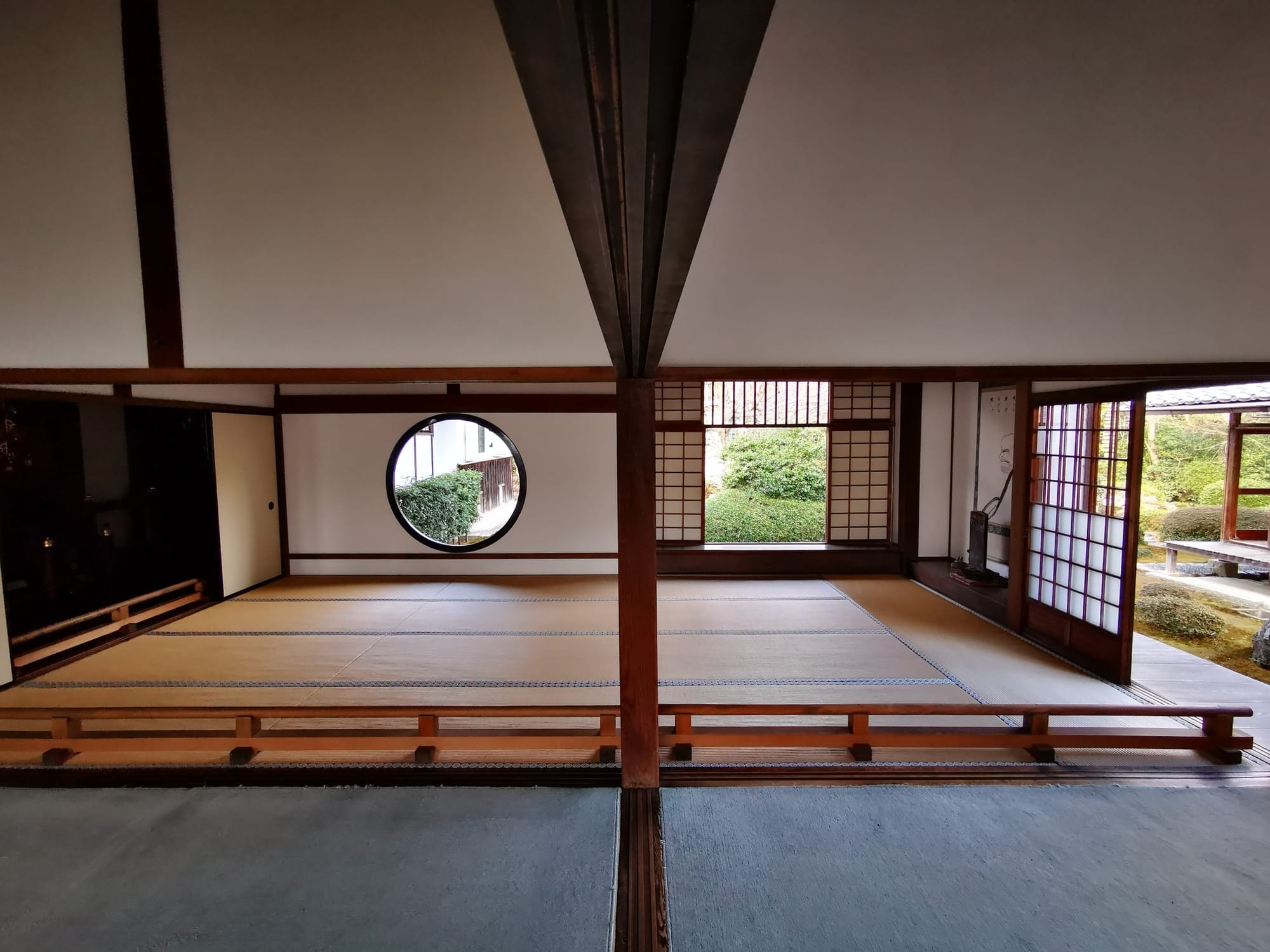
In the main hall there are two windows: the rectangular 'Window of Confusion' and the circular 'Window of Enlightenment'. The four corners of the rectangular window represent the four afflictions of life (birth, old age, disease and death) whereas the circular window, having no corners, represents the universe... or something along those lines. Anyway, it was really relaxing spending time here and nice to get away from the crowds.
Speaking of crowds! It was time to scoot on over to Kinkaku-ji (The Golden Pavillion). Mega touristy but also cool to see.
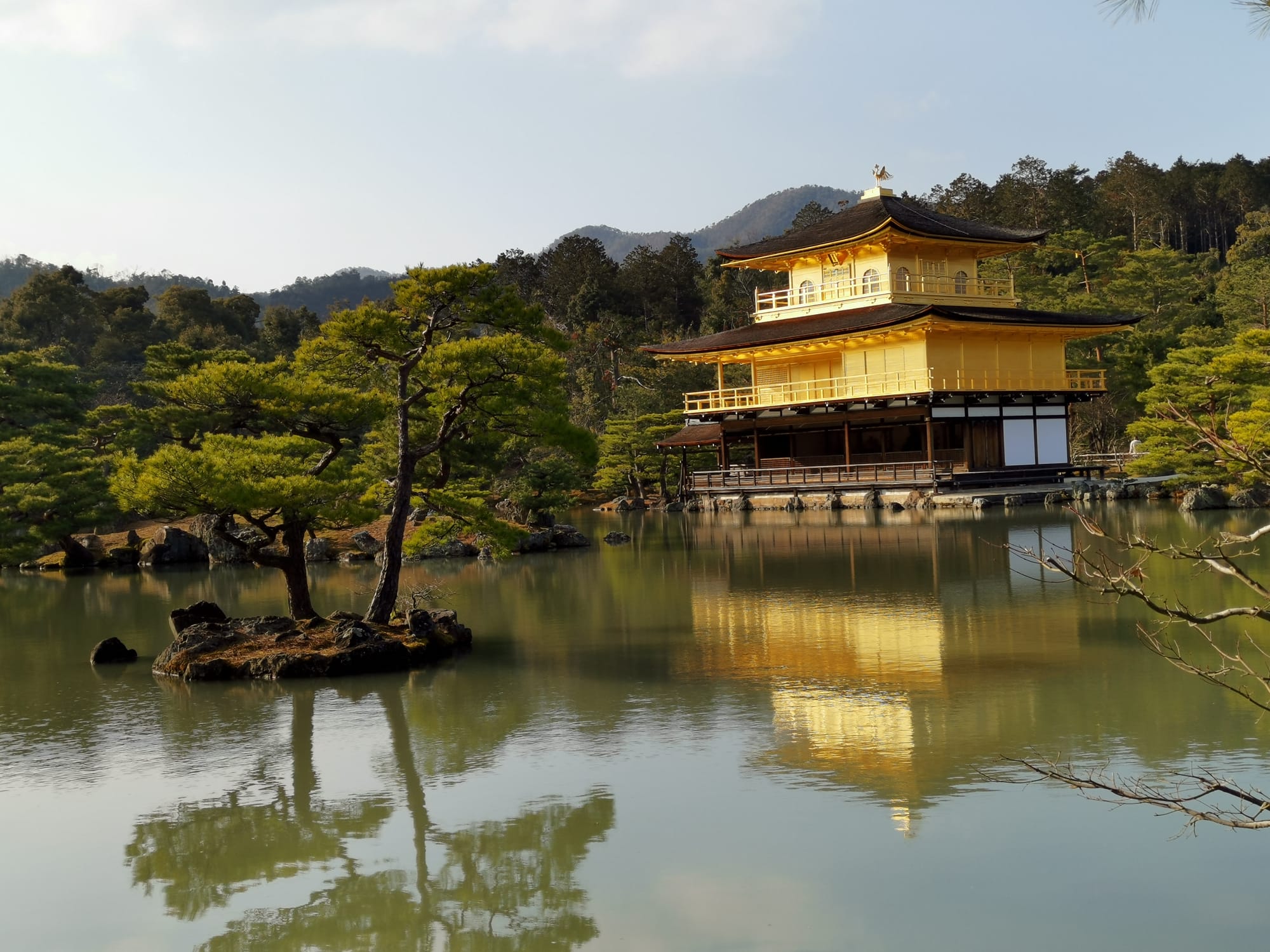
To round off the day, we went and had a cup of coffee before grabbing some dinner.
Dōmo arigatō, Takashi, for taking the time to show us around. We had an awesome day! We will definitely return the favour when you visit the UK later this year! :D
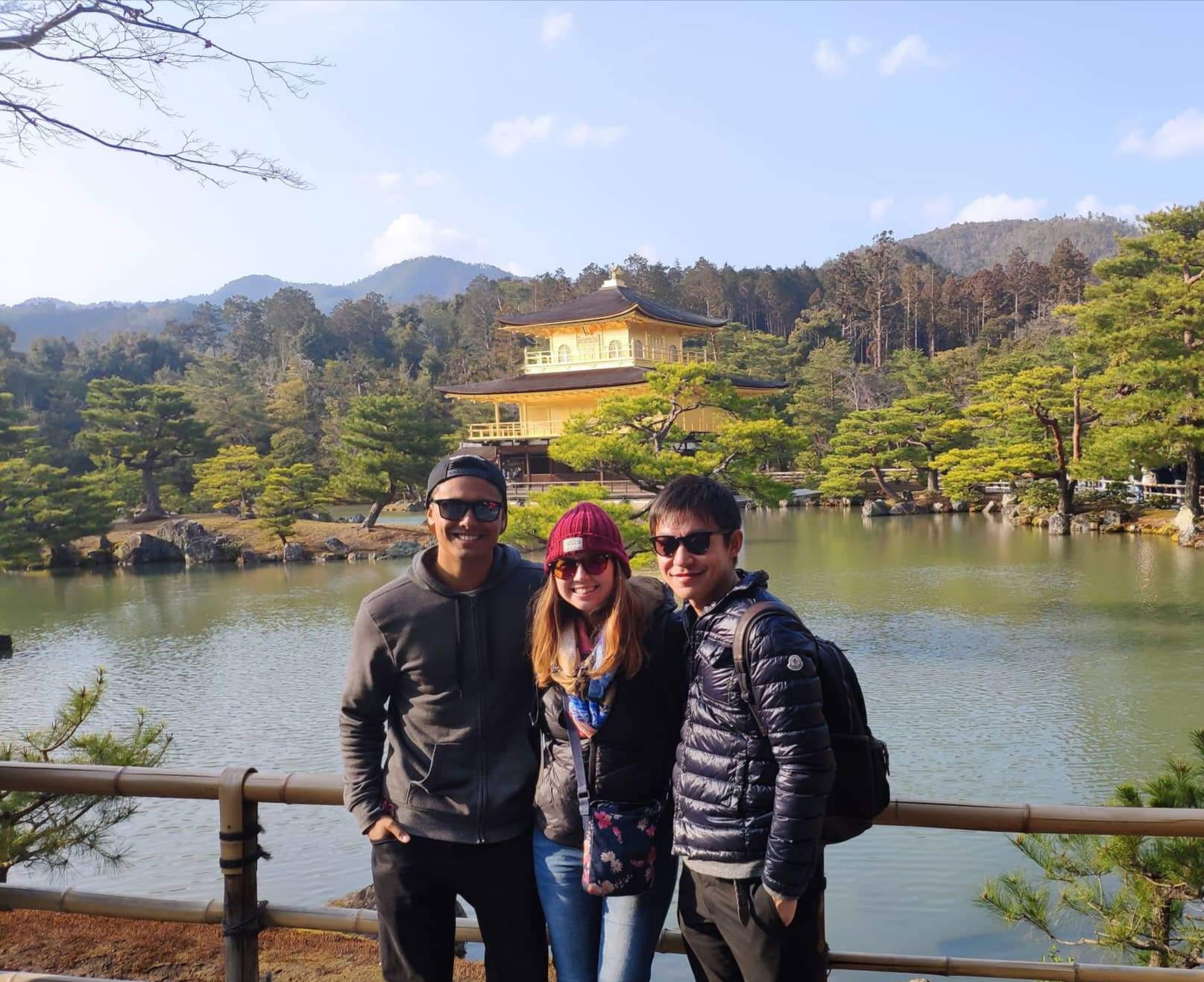
Day 4
Today was the day we finally visited Fushimi Inari Taisha, the Shinto shrine we had briefly stopped at shortly after arriving in the Kyoto. This unique shrine is famous for the thousands upon thousands of torii gates that line the trails leading up into Mount Inari.
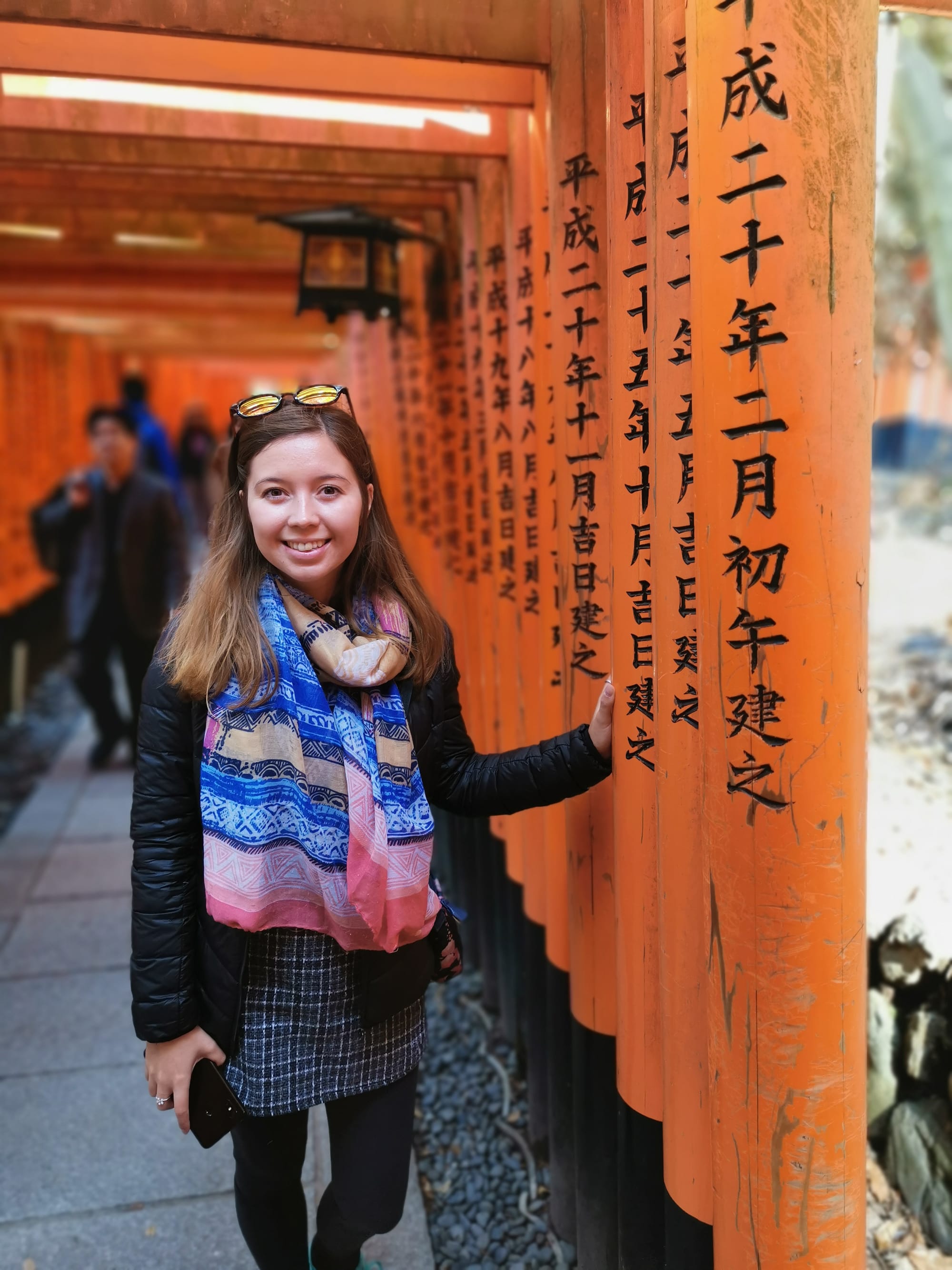
Being one of the top sights in all of Japan, you can guess how busy it was. Nevertheless, it was an enjoyable experience.
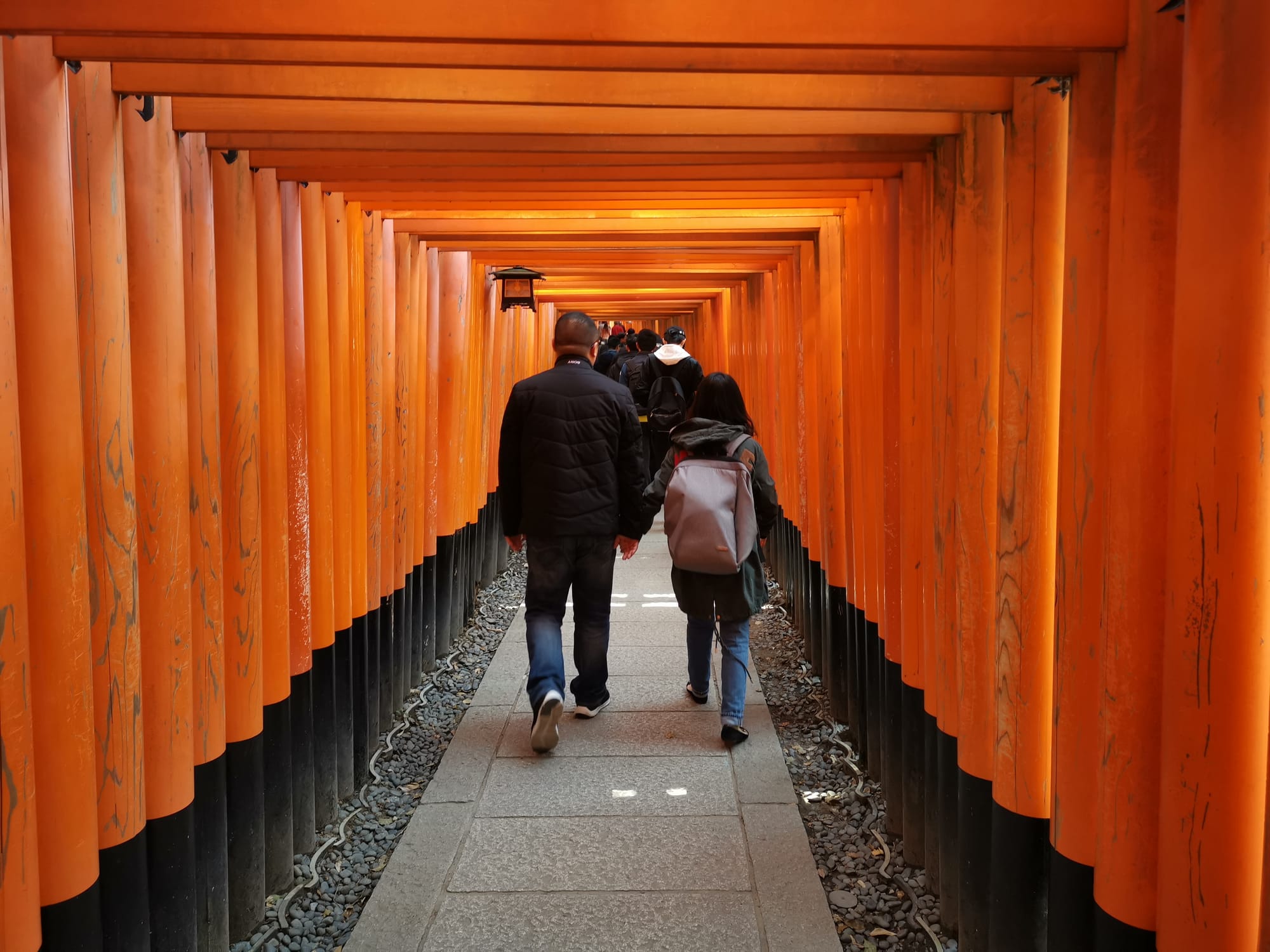
Later, we caught the train to Nara, another city in the Kansai Region. Like Kyoto, Nara was once the capital of Japan and so it too is home to many historically significant buildings. Roaming freely around Nara Park were lots of deer which we were able to feed. Dotted across the park were vendors selling small packs of deer-biscuits (as I called them) for ¥150.
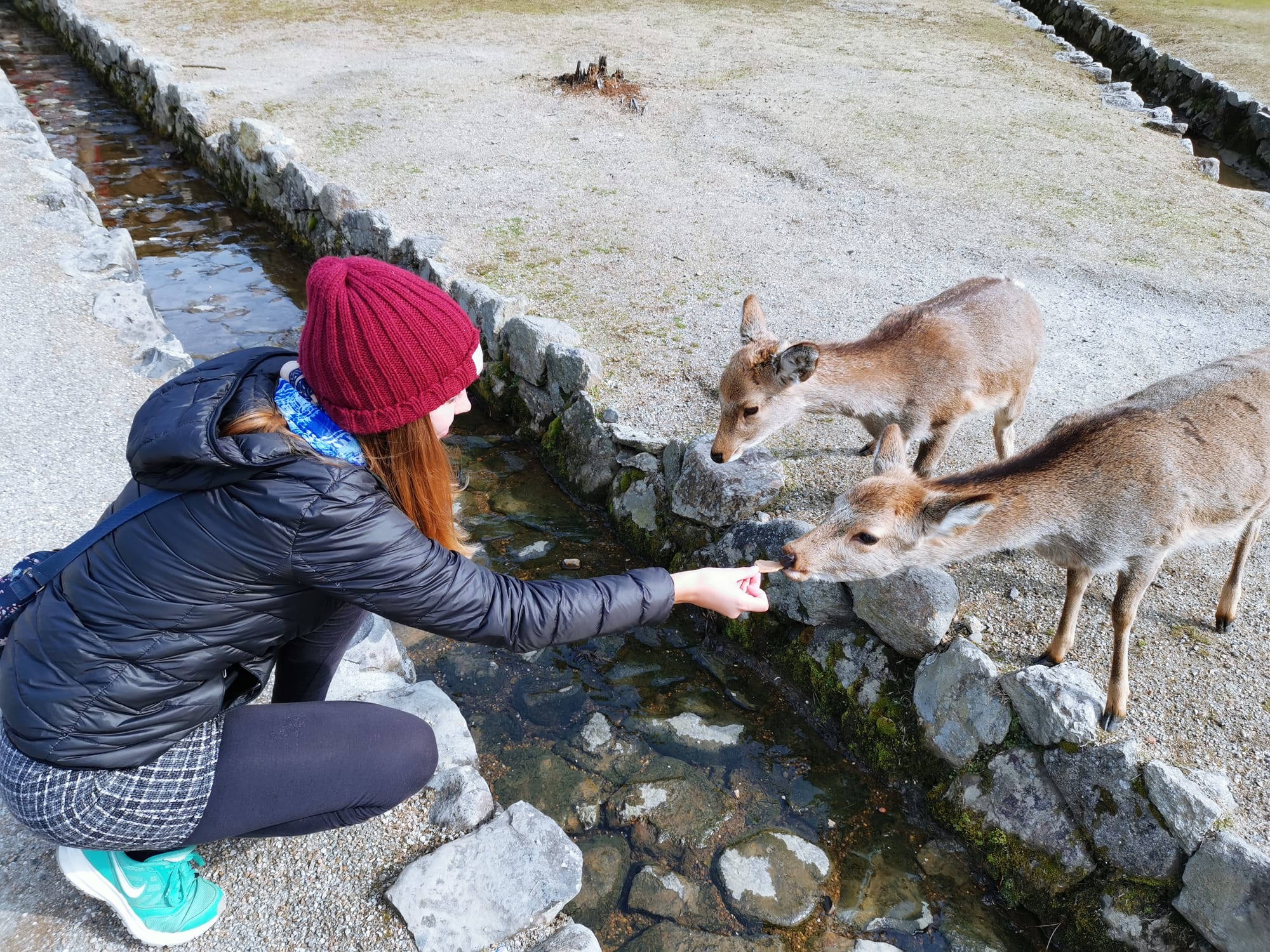
After spending some time hanging around with our new friends, Deerlilah and Alexandeer, we made our way over to Kōfuku-ji to have a look at the five-tiered pagoda.
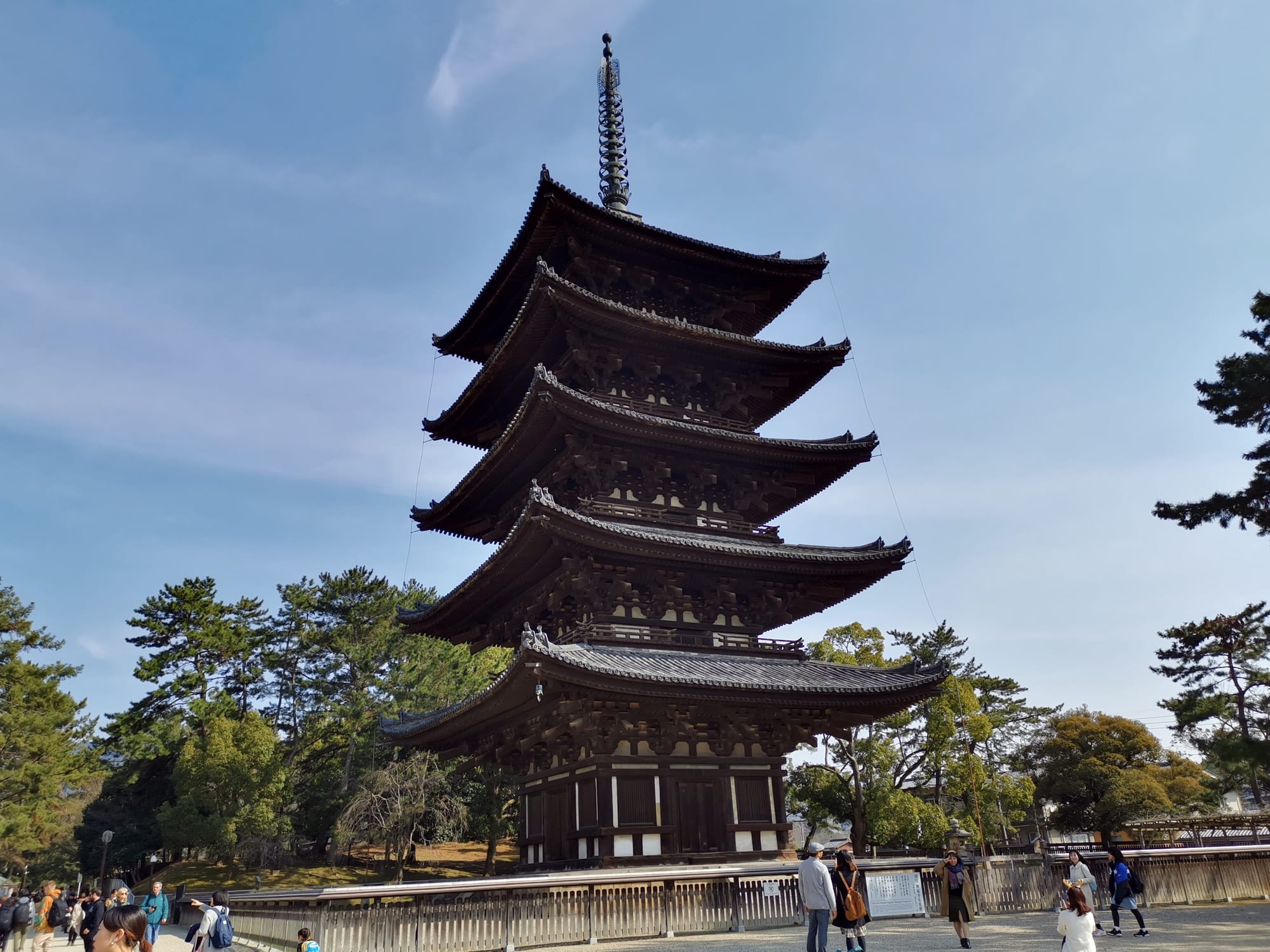
Then we were off to Tōdai-ji. We passed under the impressive Nandaimon Gate and entered the main hall which is famed for housing Japan's largest bronze Buddha statue as well as many other impressive pieces.
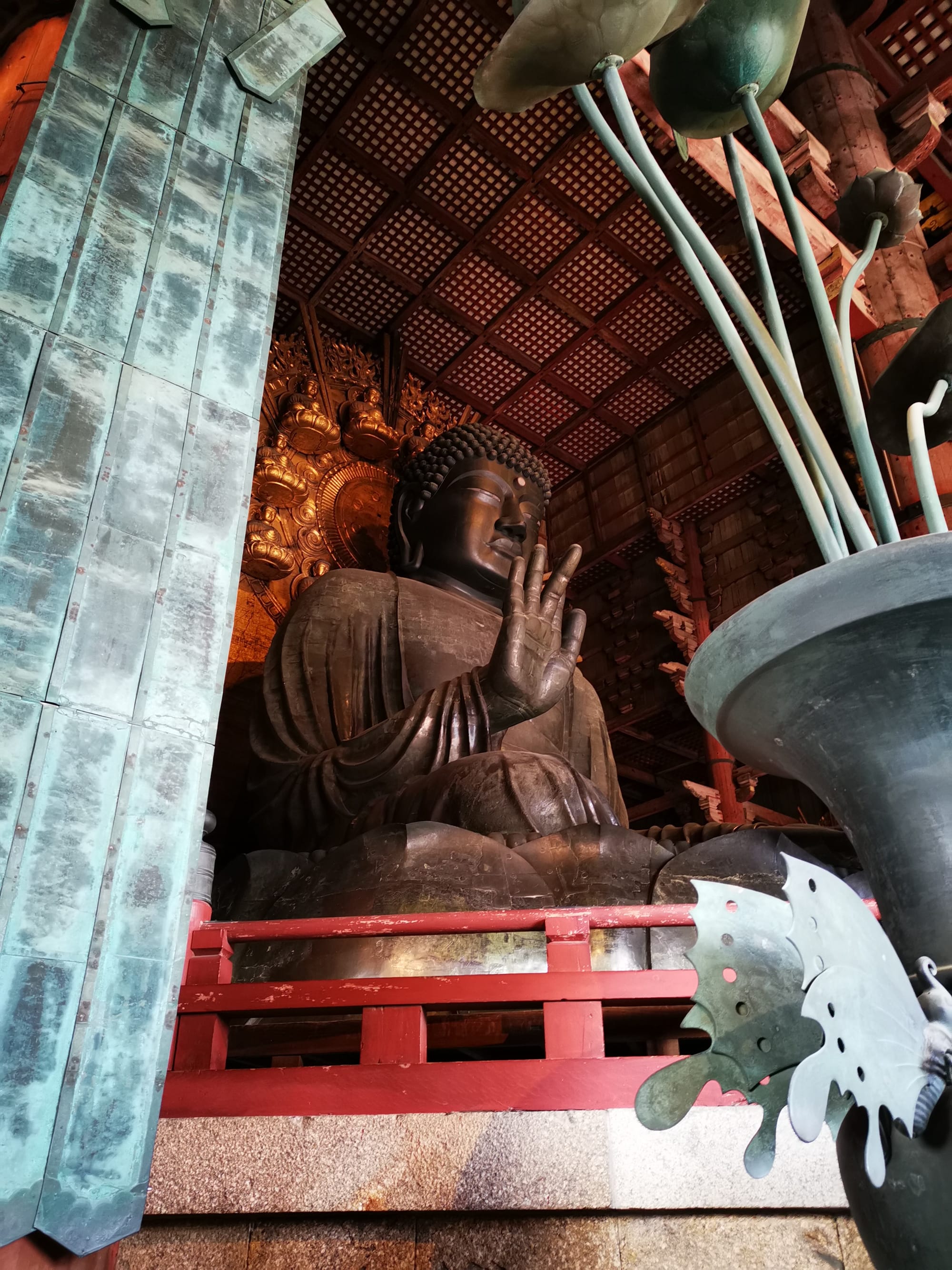
The Great Buddha Hall itself is the largest wooden building in the world, despite the fact it's only ⅔ its original size.
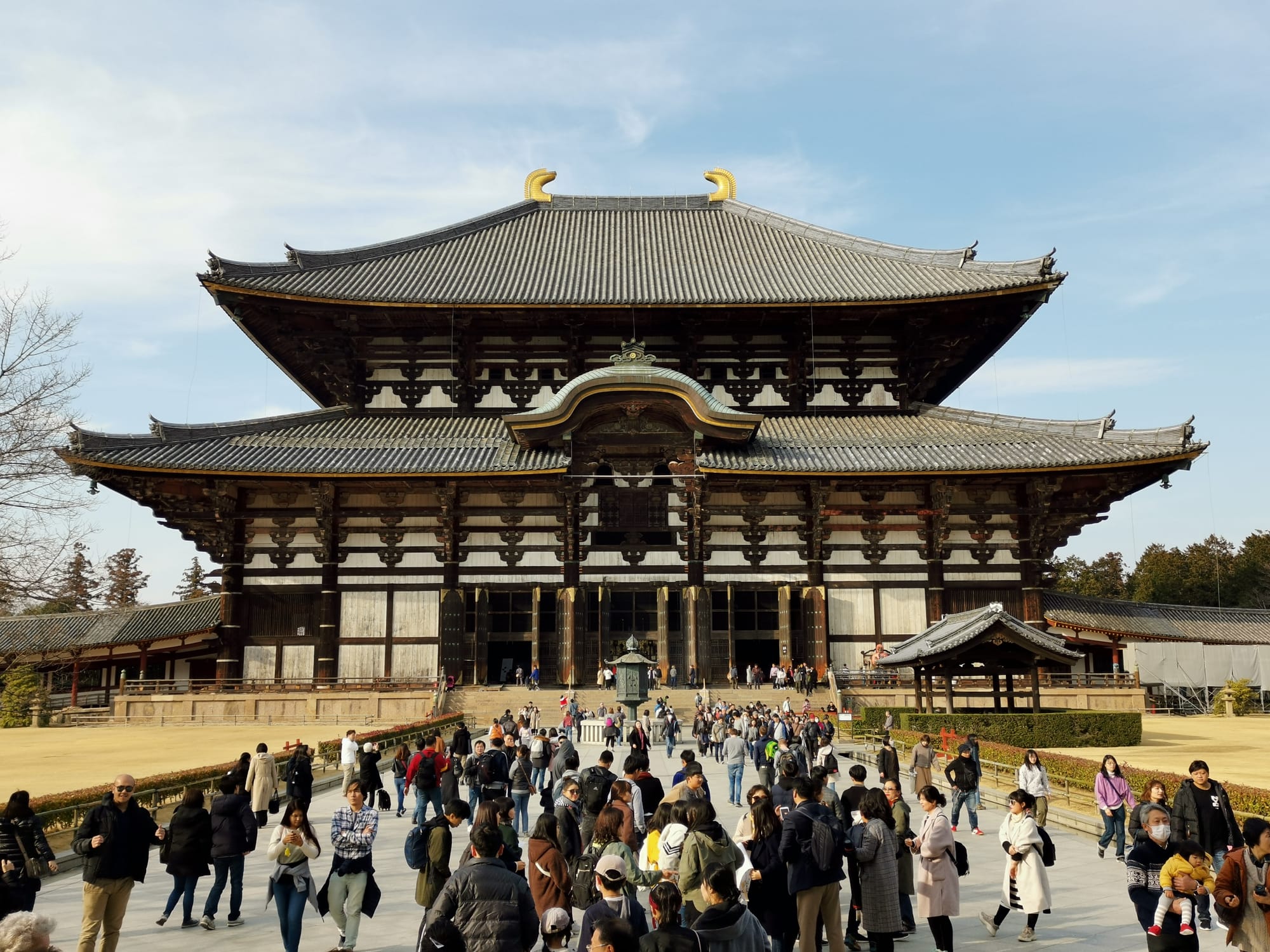
Next to Tōdai-ji but within the same complex was Nigatsu-do, a smaller temple offering a pretty cool view of the surrounding parkland, city and mountains. This was our last stop in Nara before catching the bus and train back to Kyoto.
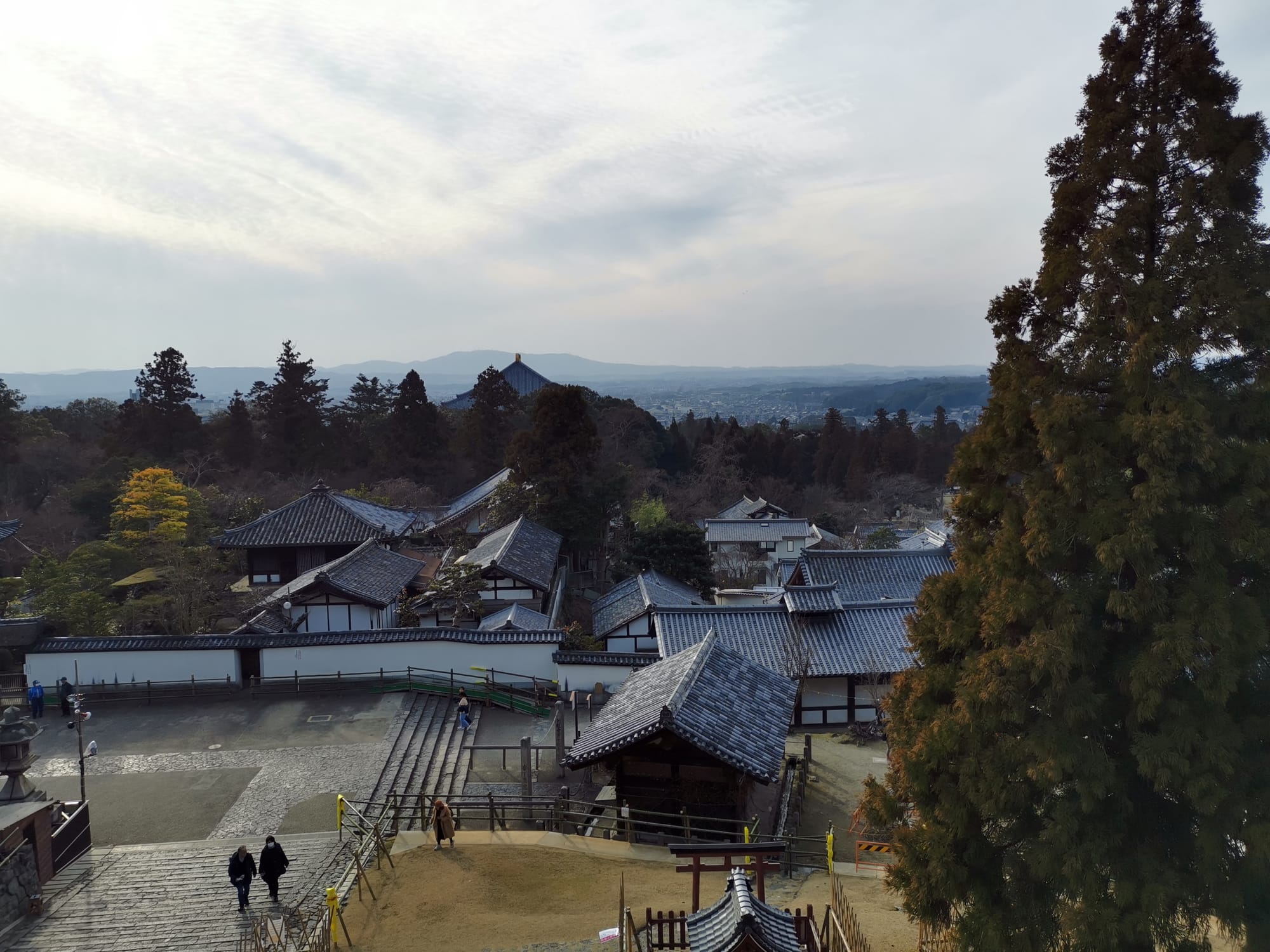
Day 5
In the morning, we took the metro over to the Arishiyama District on the west side of the city.
From the station, we walked a short distance to reach Tenryu-ji, one of the most important Zen temples in Kyoto. It was fairly busy already by the time we arrived. We payed the entrance fee and went in to have a look around. I was quite surprised at how serene it was even with the hustle and bustle of the crowds.
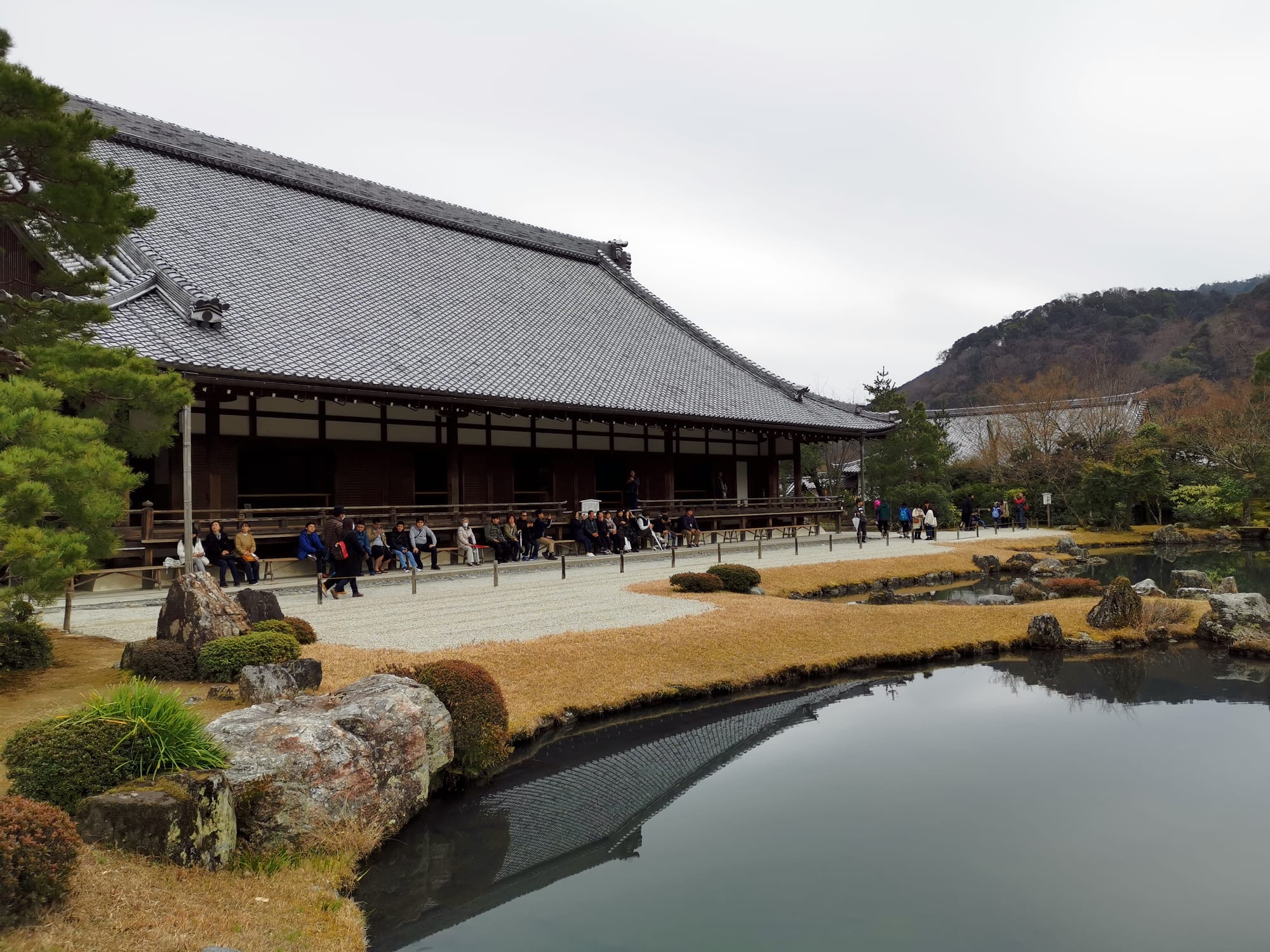
Our next stop was the enchanting Bamboo Grove. I felt really at peace here staring up at the towering walls of bamboo gently swaying in breeze.
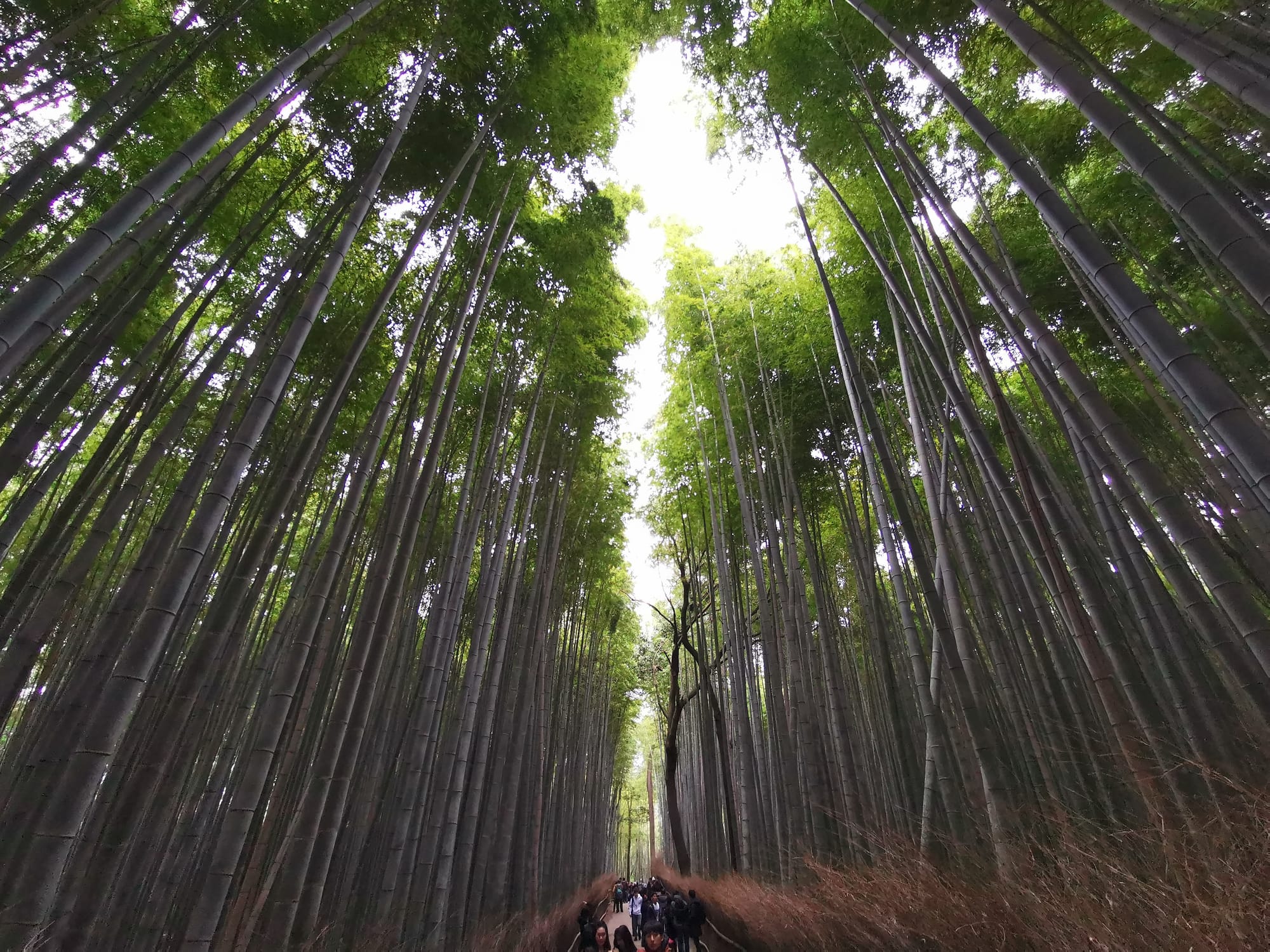
There was something special about the atmosphere of this forest, something I can't quite put my finger on. All I can say is, it was definitely worth a visit.
Later, we stopped by Arishiyama Station to check out the Kimono Forest, an art installation consisting of hundreds of kimono-clad pillars.
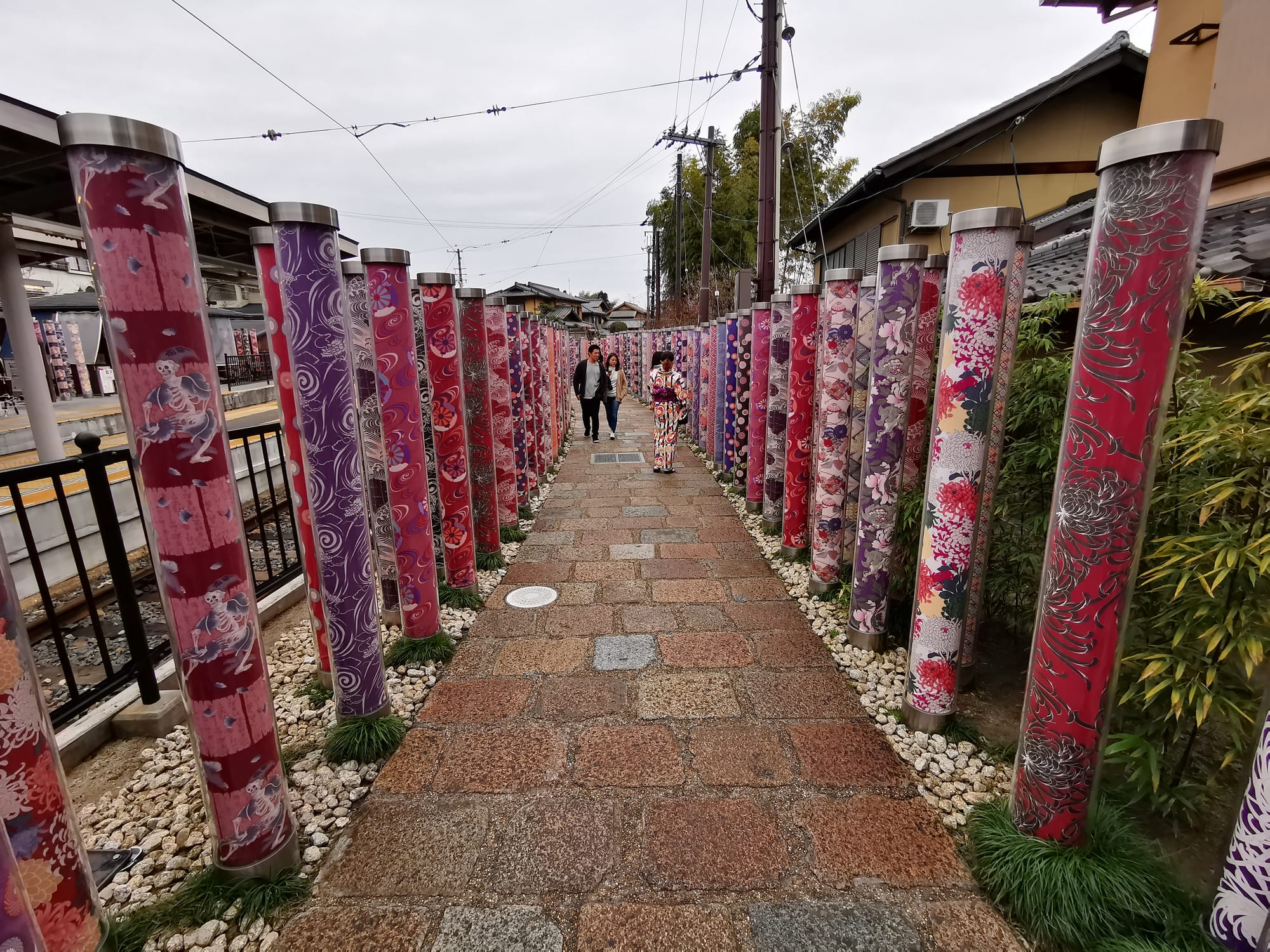
Next, we crossed over the Togetsu-kyō Bridge and headed to the Arishiyama Money Park. It was a short hike up the mountain to reach the main area of the park where all the monkeys were hanging out.
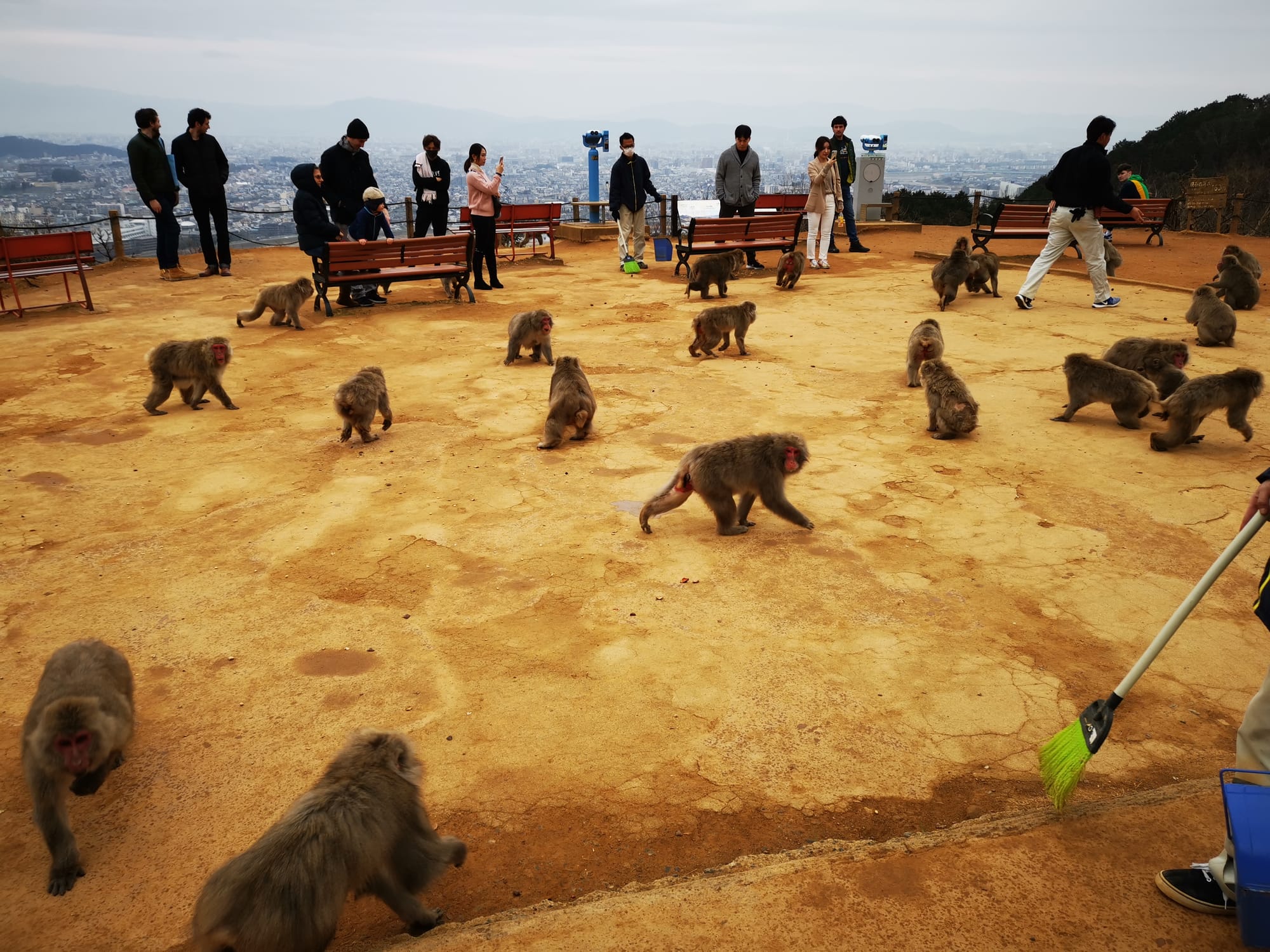
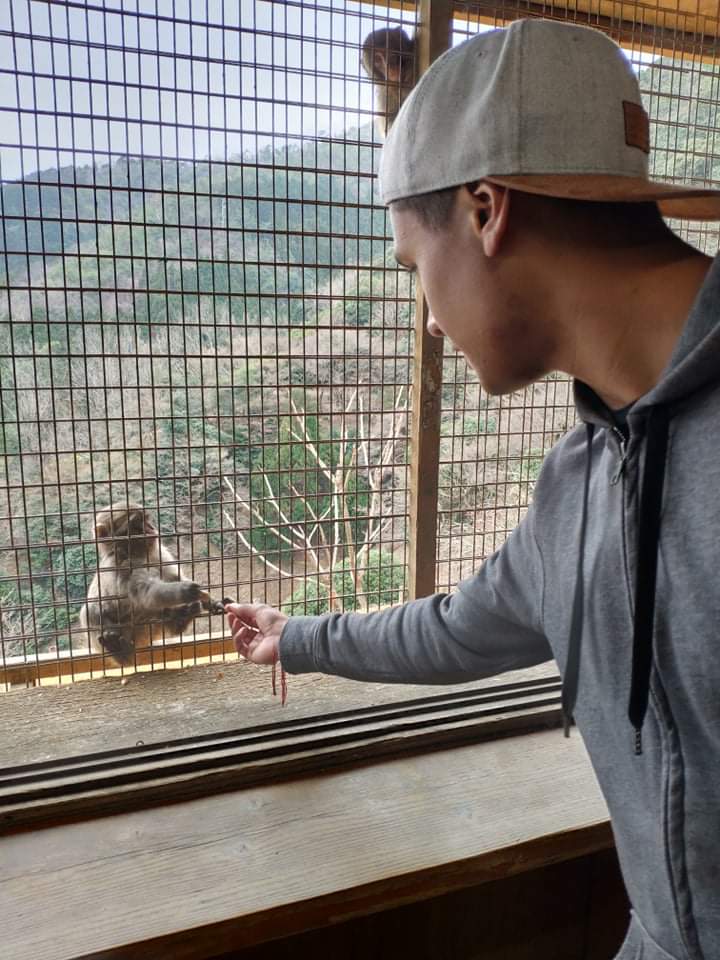
On the way back to our apartment, we passed by Tō-ji but couldn't go in as it was about to close. Instead, we had a look around some of the grounds and then went home.
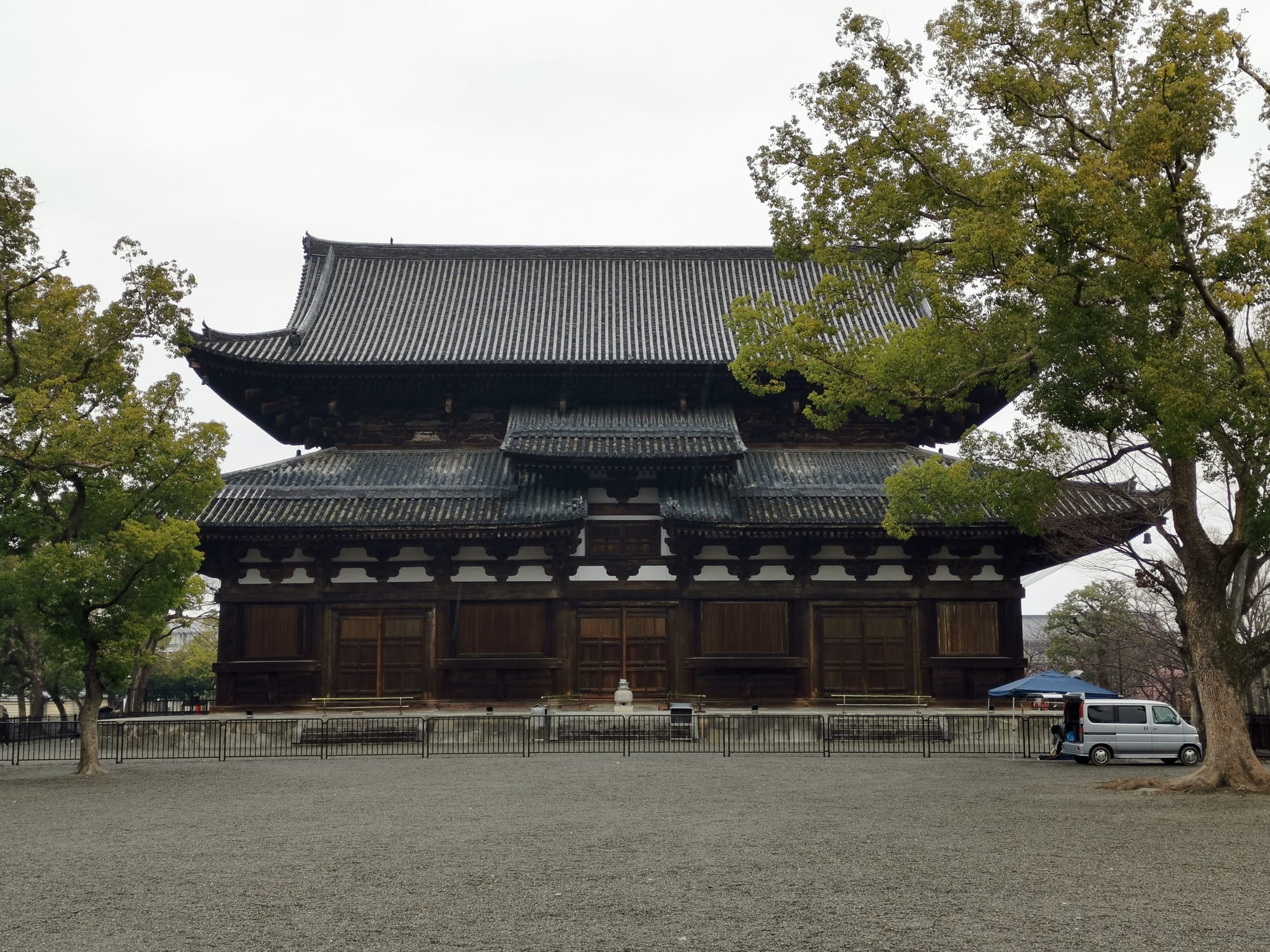
Day 6
Our final day in Kyoto!
Tōfuku-ji was first on our list of things to do.
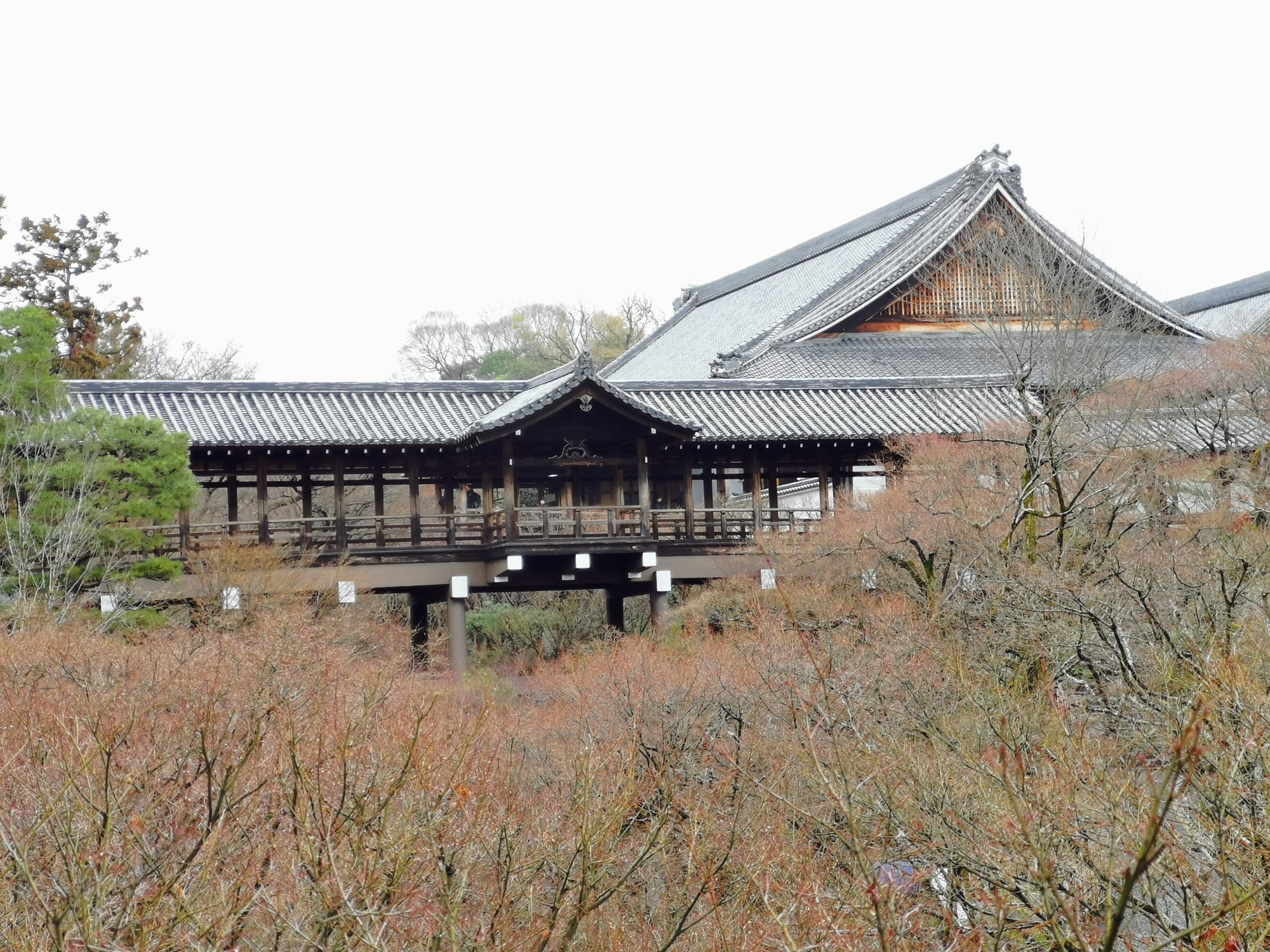
Unfortunately, Siwan was not impressed with this particular temple as she thought the admission fee was too high. I reckon she might have had a different opinion had we come during autumn as the views are supposed to be spectacular.
Next up was a famous mausoleum called Otani Hombyō.
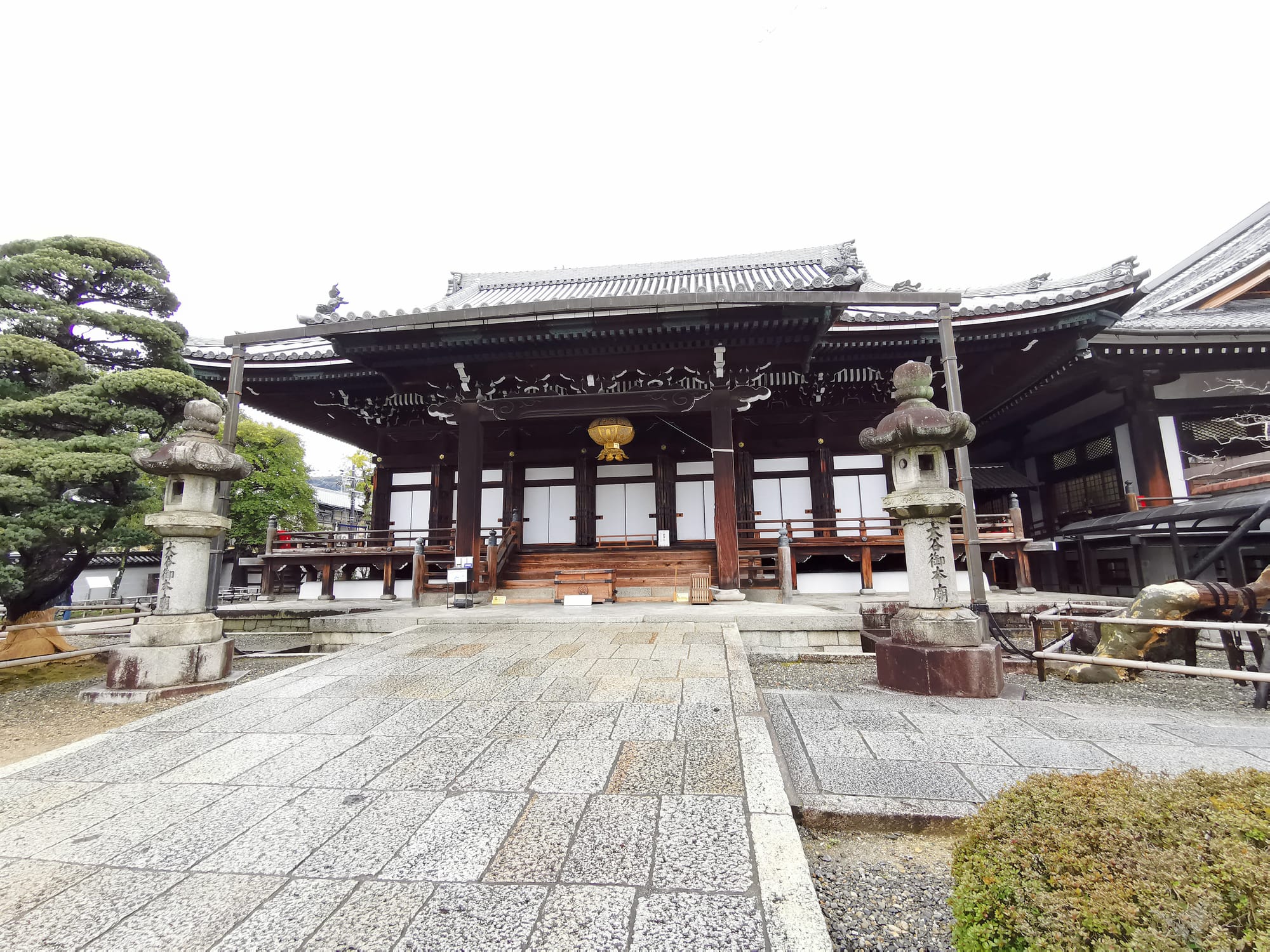
It was a slightly unusual experience for us as we inadvertently entered an ossuary (a place for storing skeletal remains of the deceased) and then couldn't find our way back out again.
Afterwards, we made our way over to Nanzen-ji, another beautiful Zen Buddhist temple. One thing we weren't expecting to see here was a 19th century aqueduct running straight through the temple grounds.

Our penultimate destination was Ginkaku-ji (The Silver Pavillion). This majestic Zen temple sits amid a picturesque landscape of gardens, ponds and hillside woodland.
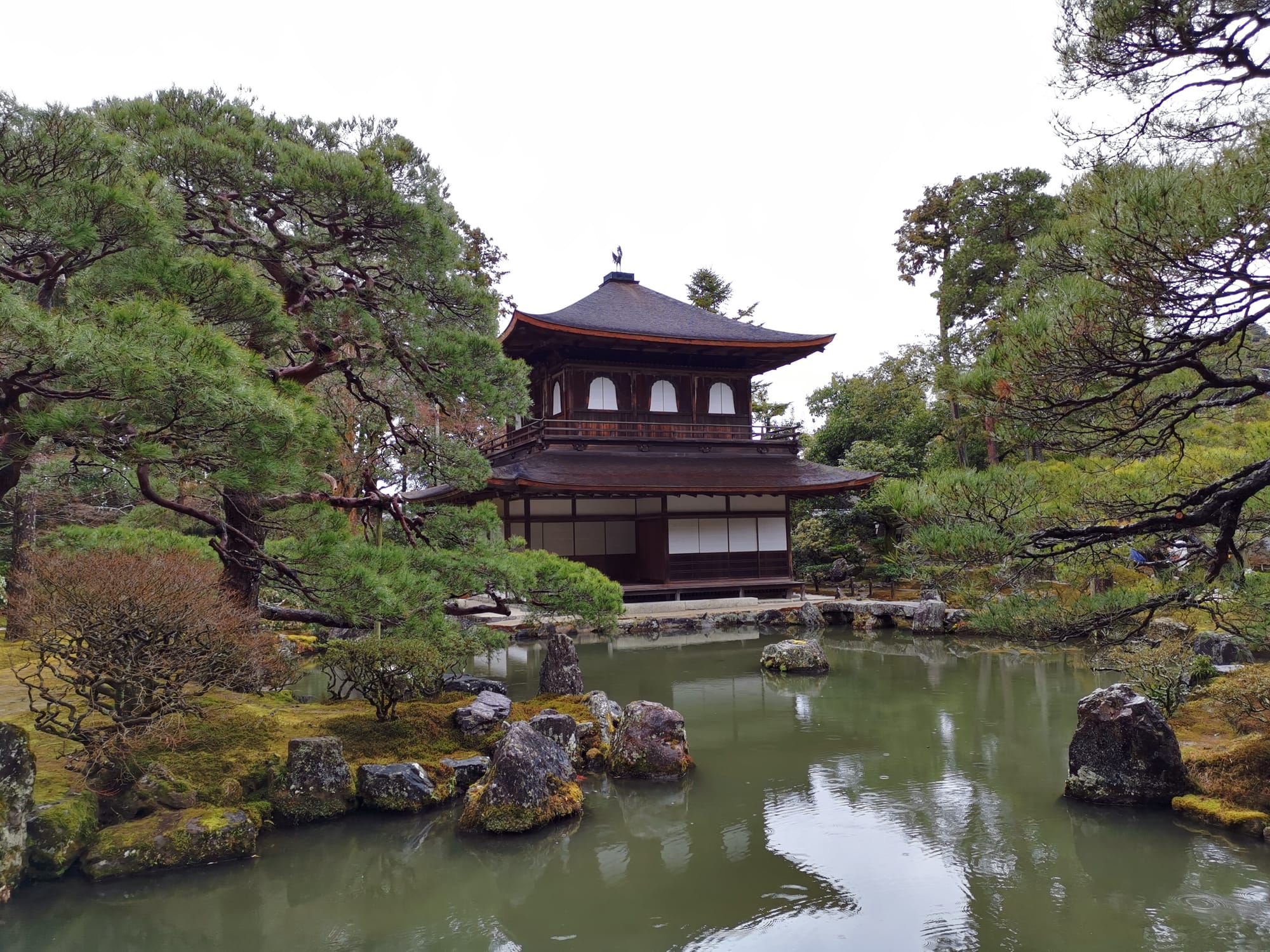
The last place we visited was Nijō Castle. Siwan and I both found it really interesting learning all about the feudal period of Japanese history — thankfully, all the information was also provided in English.
